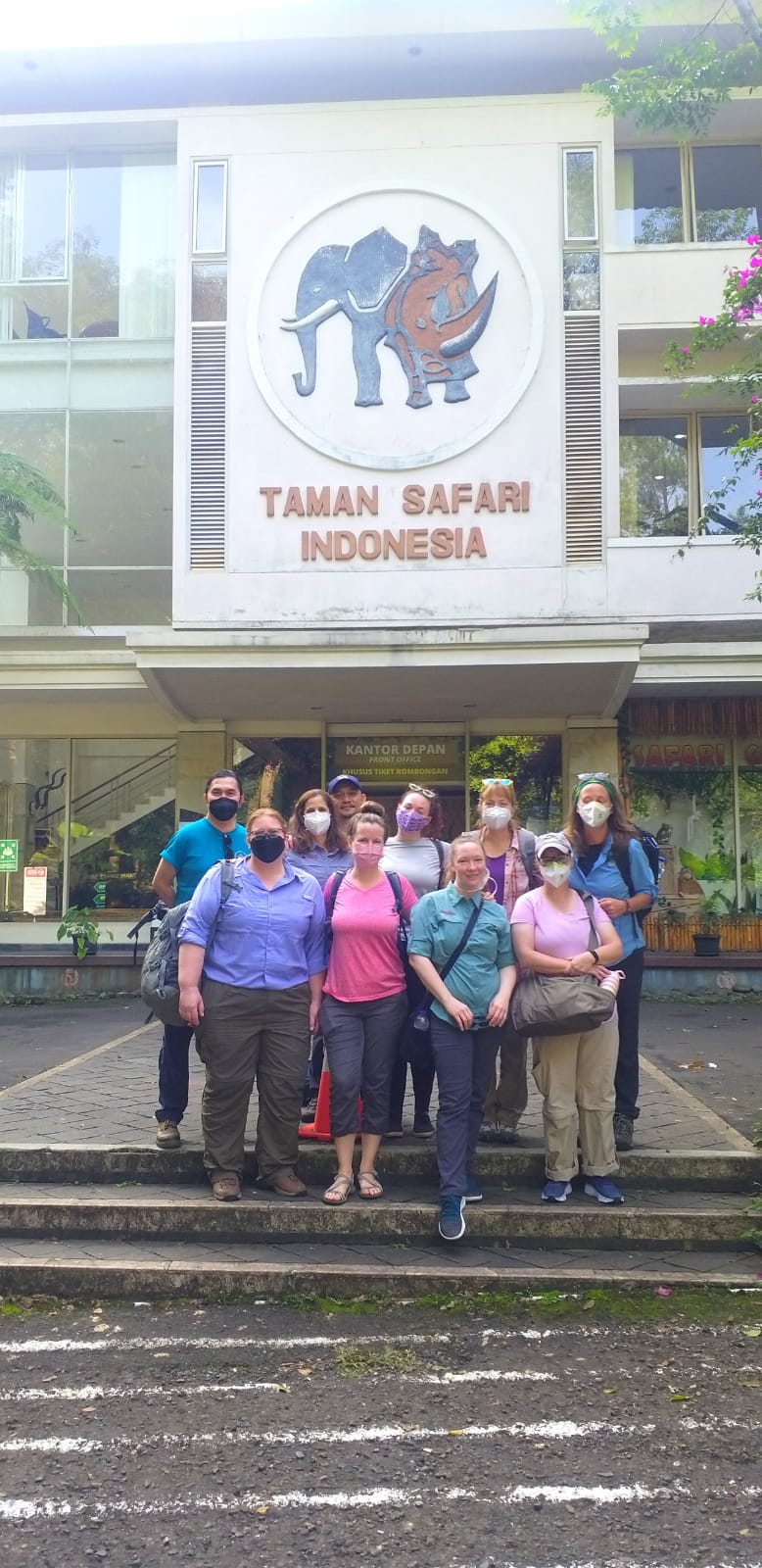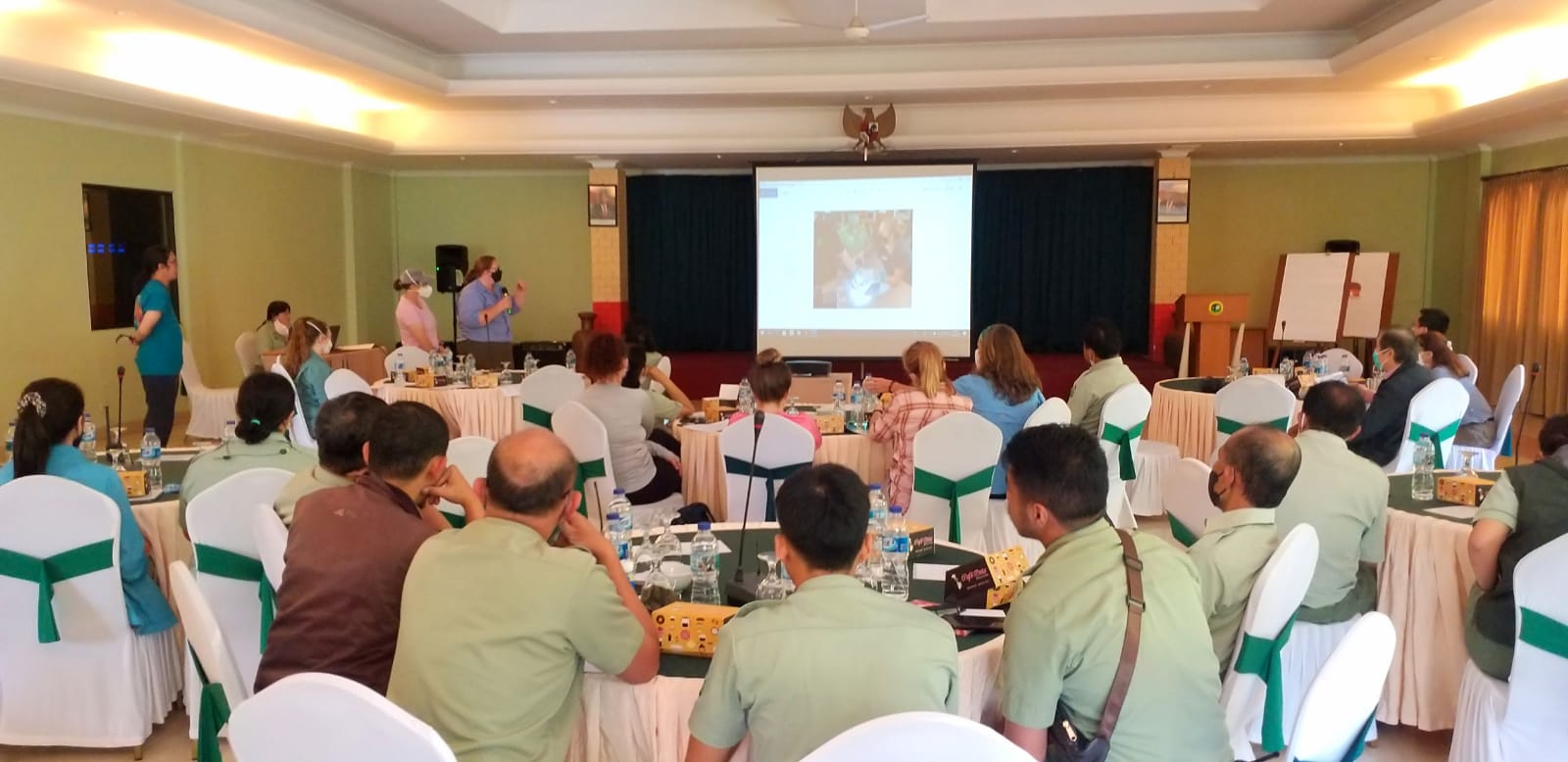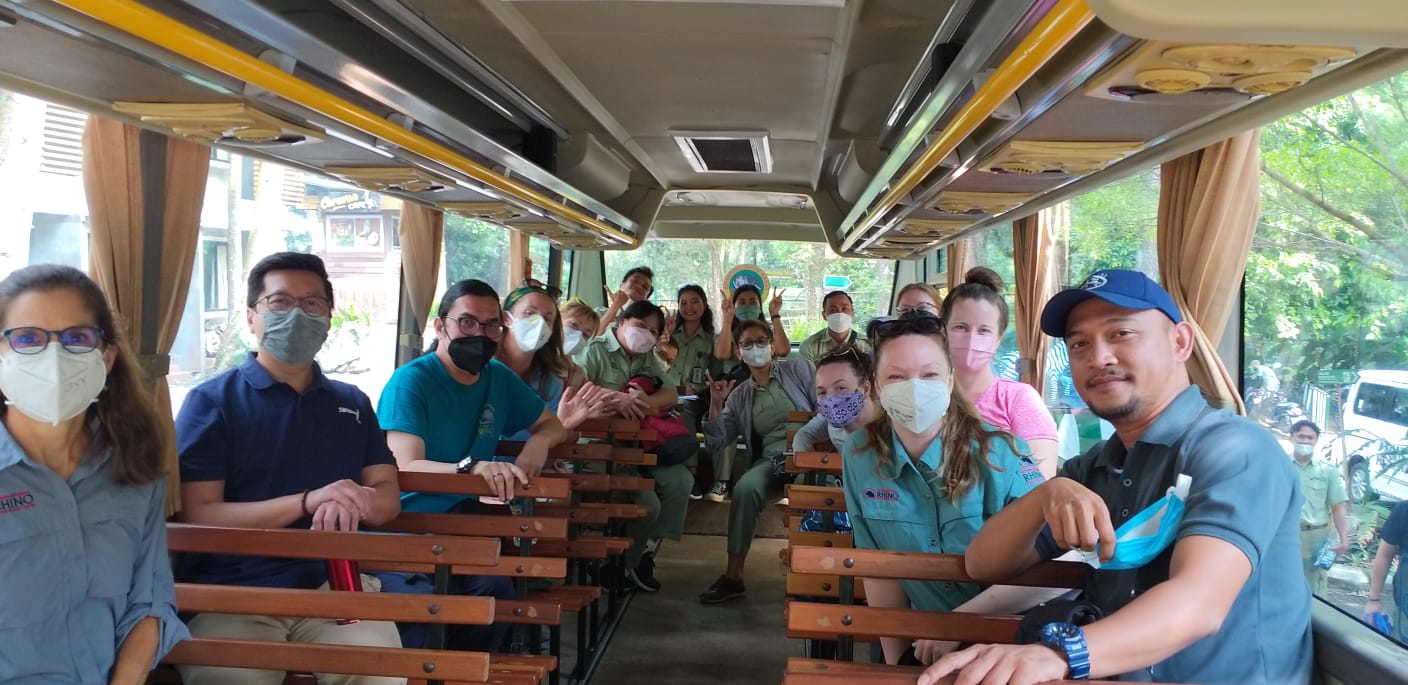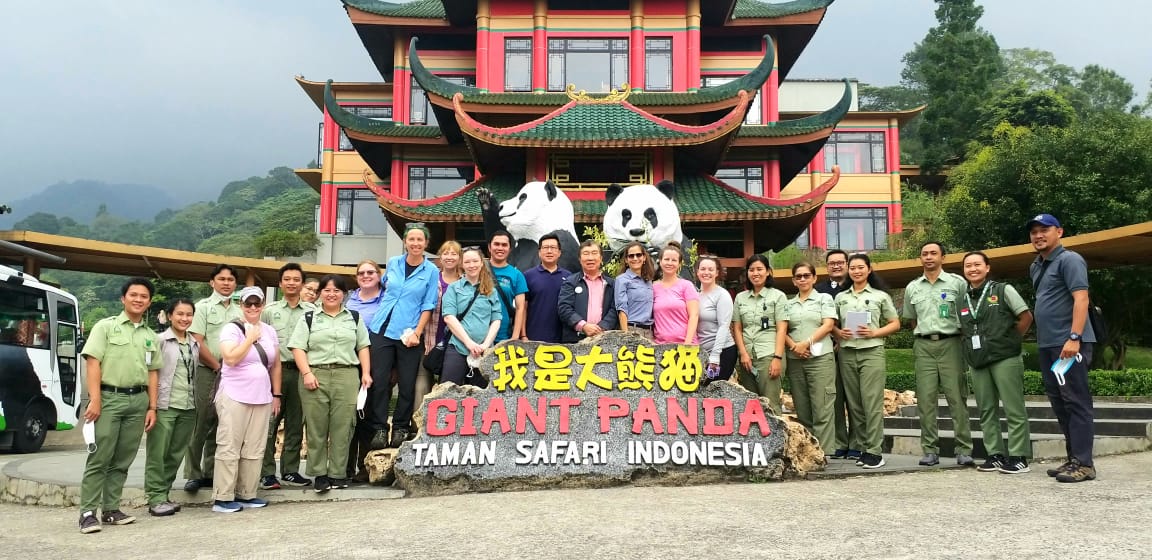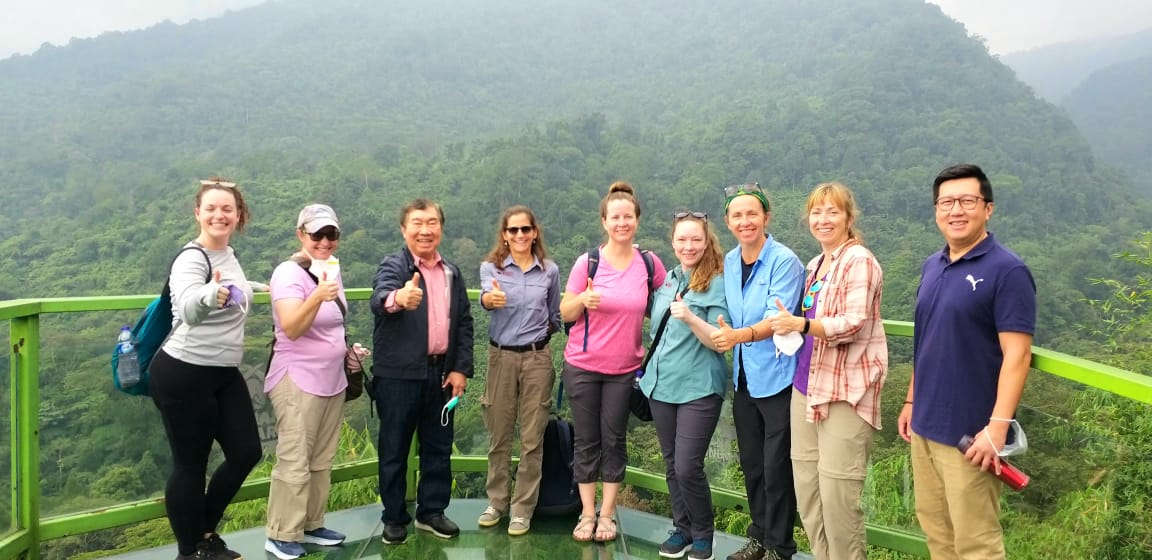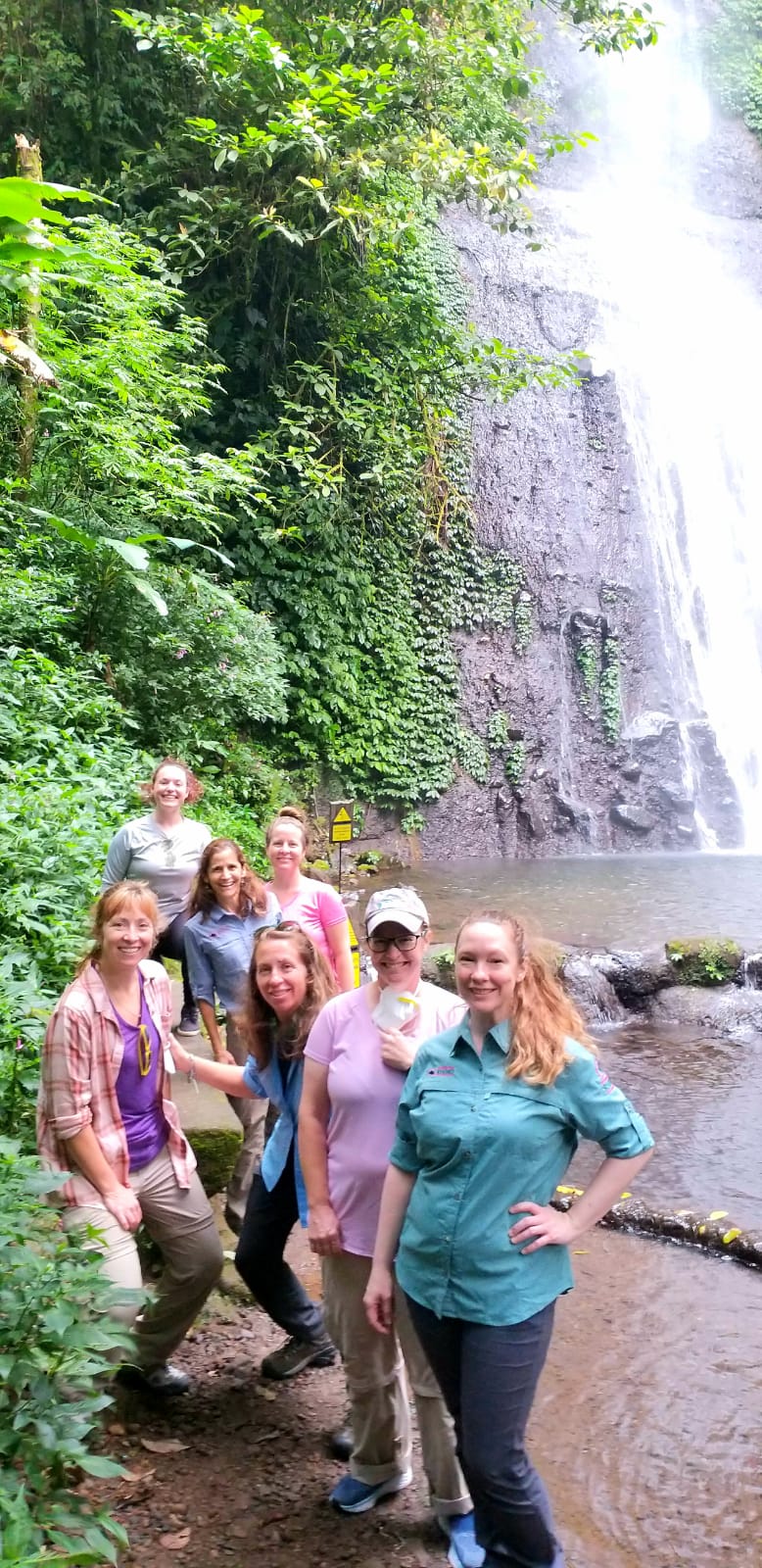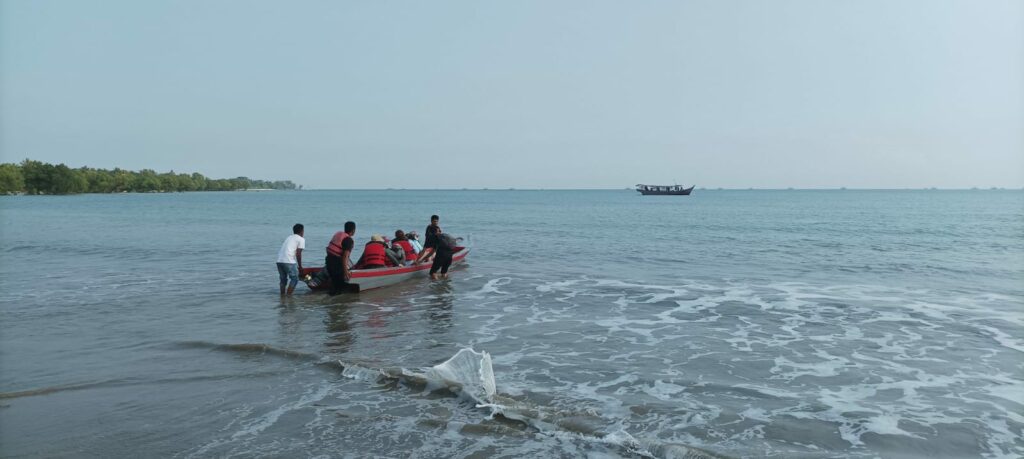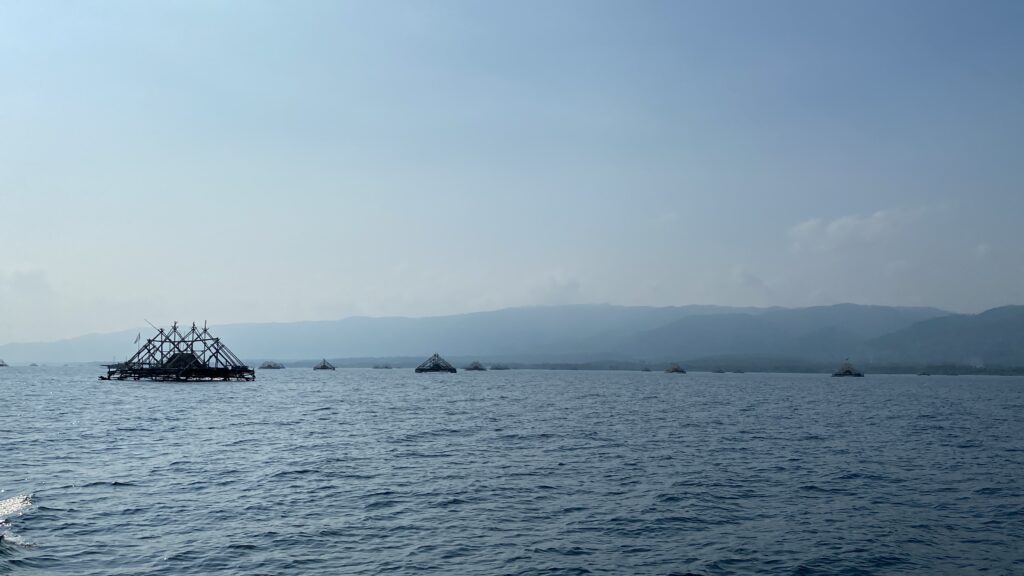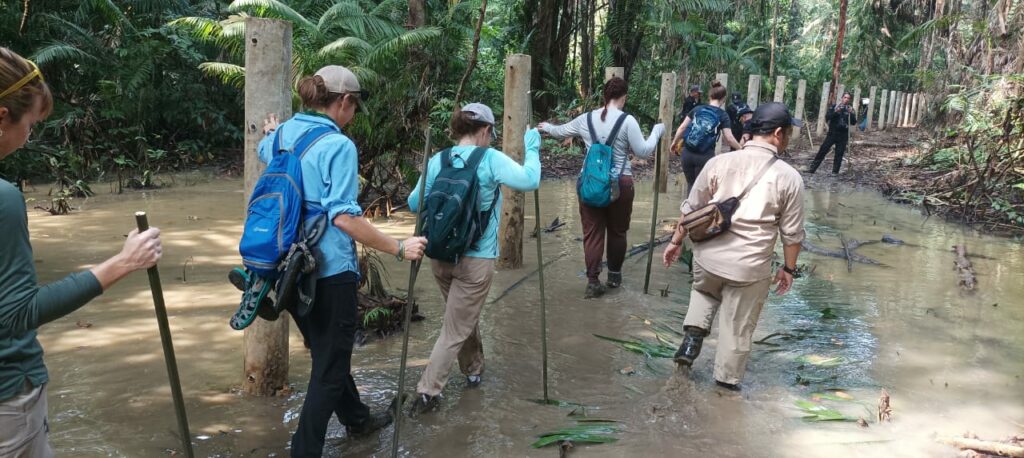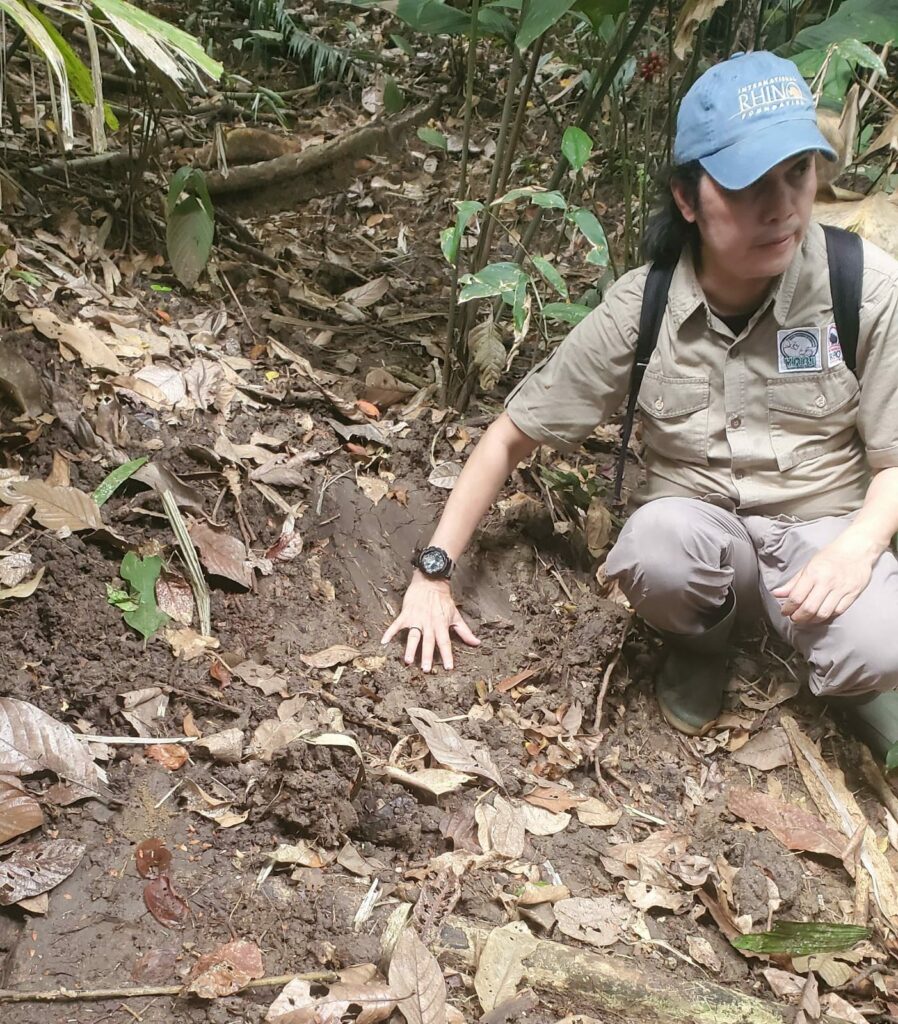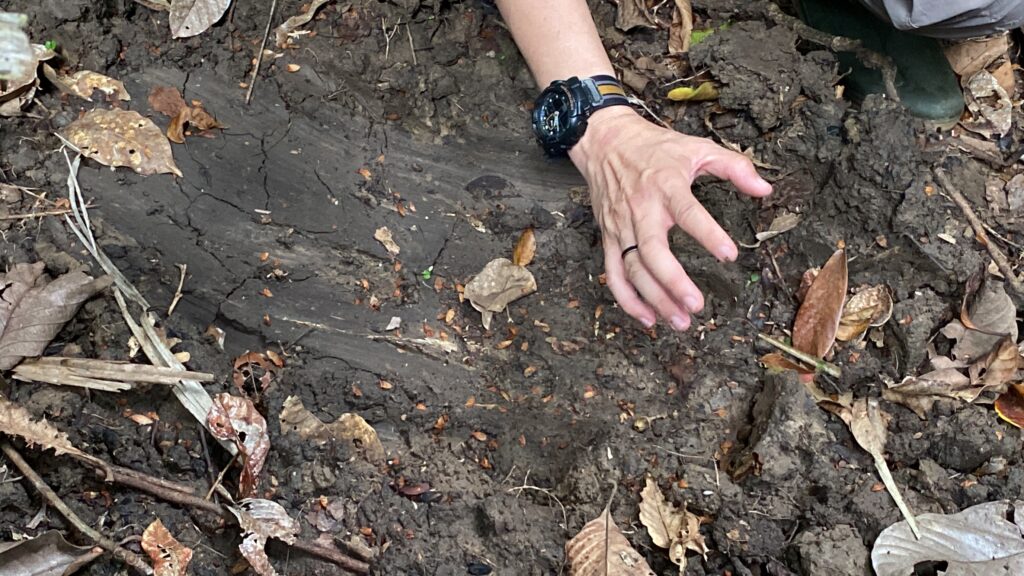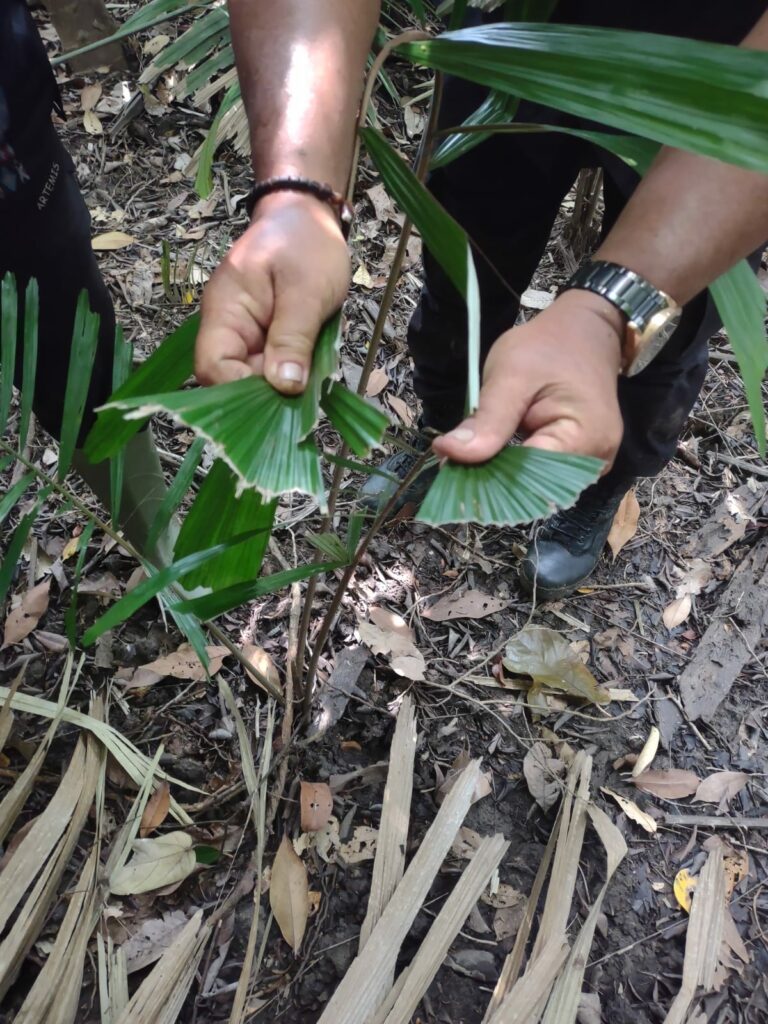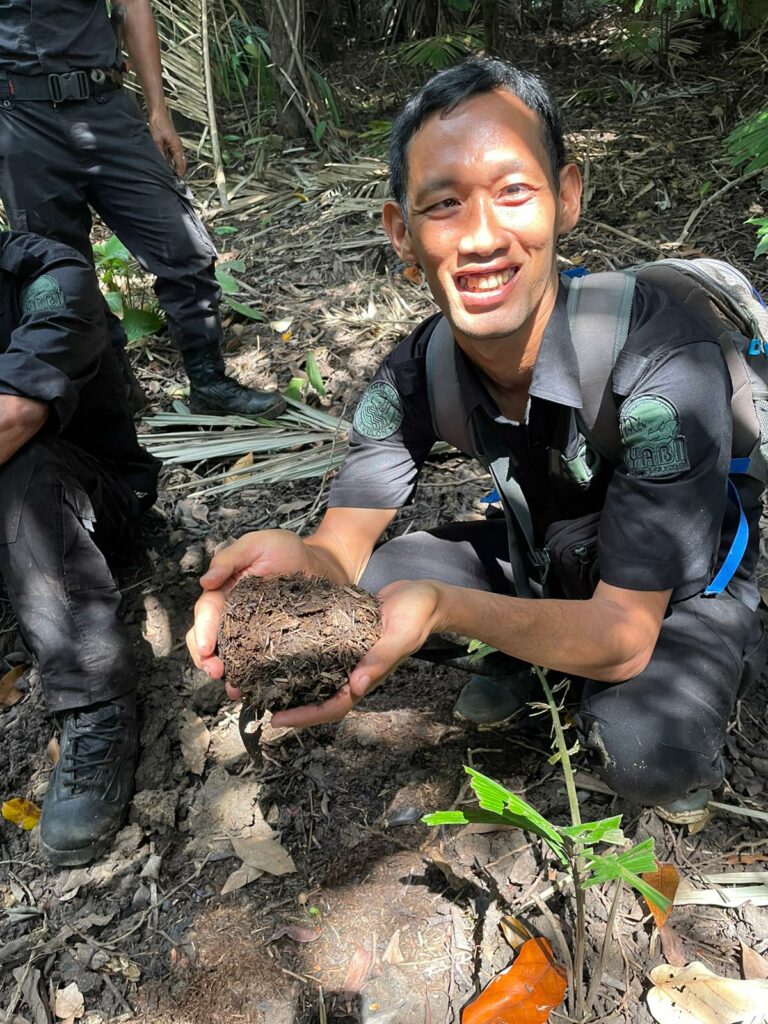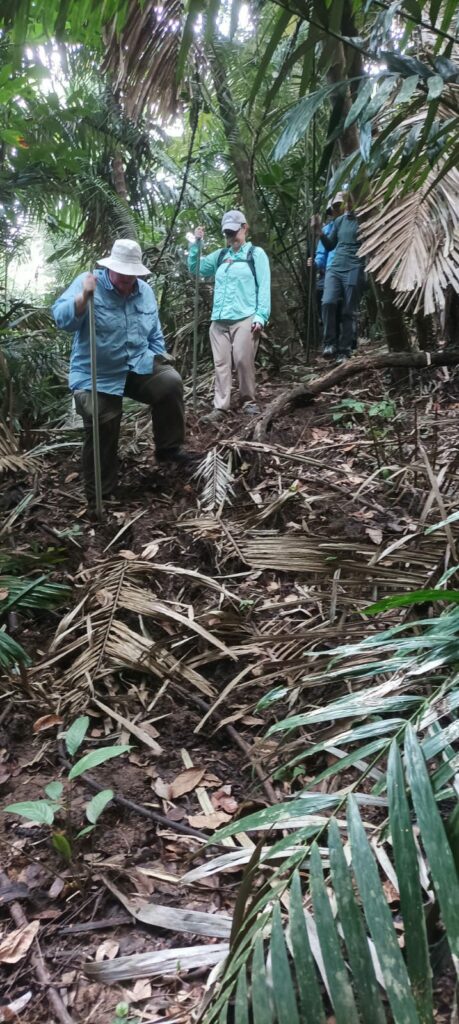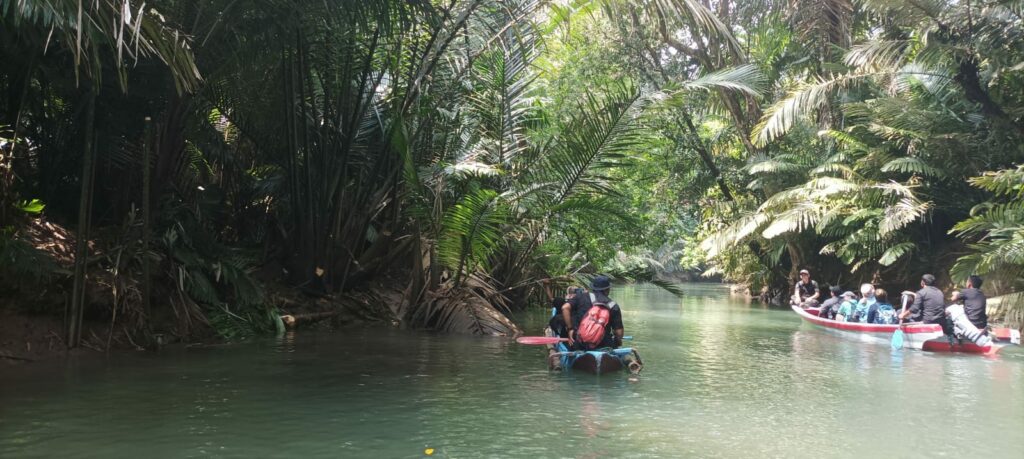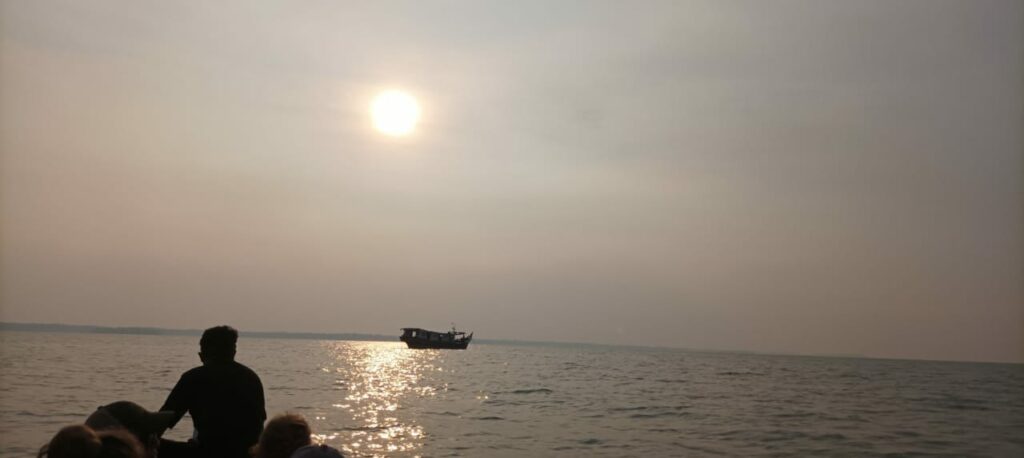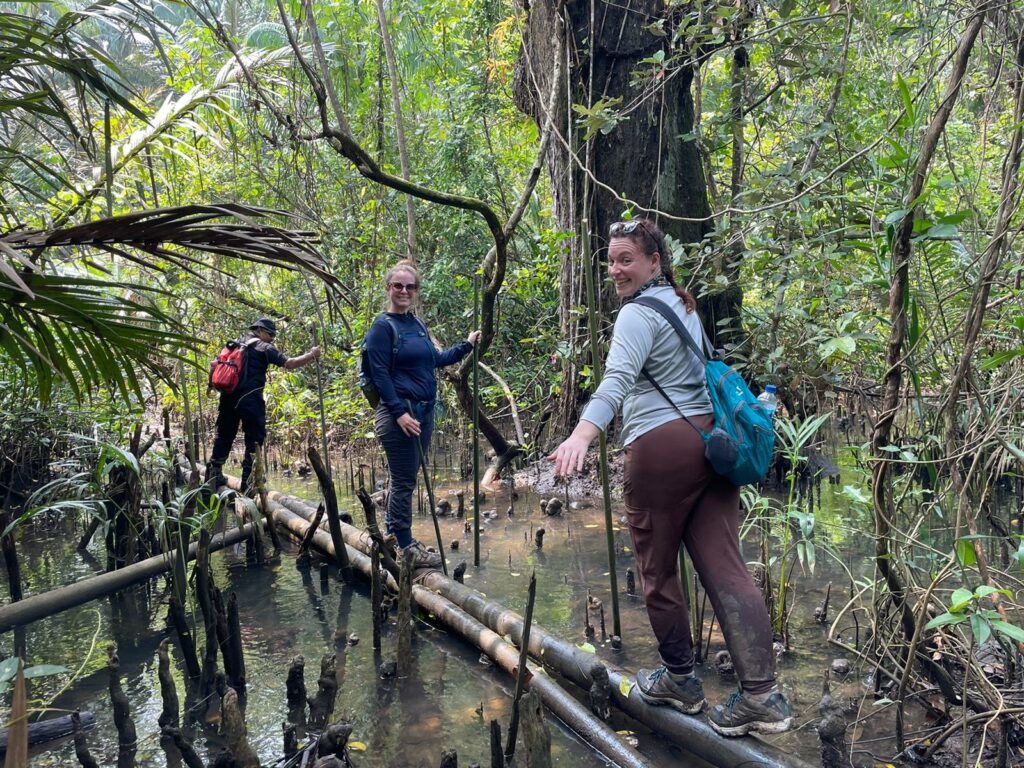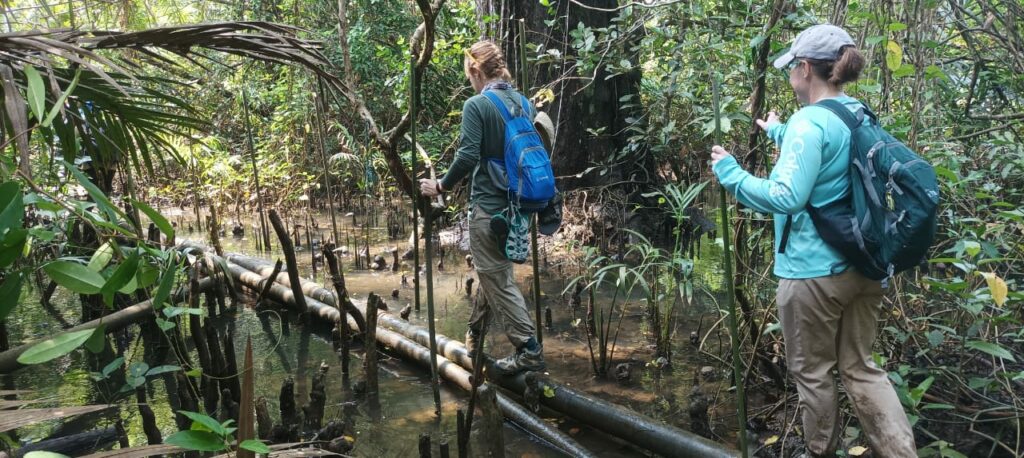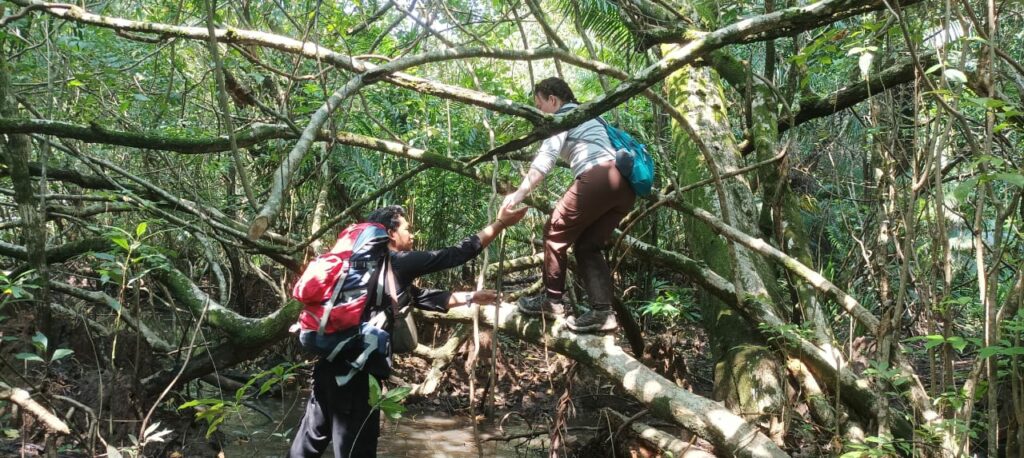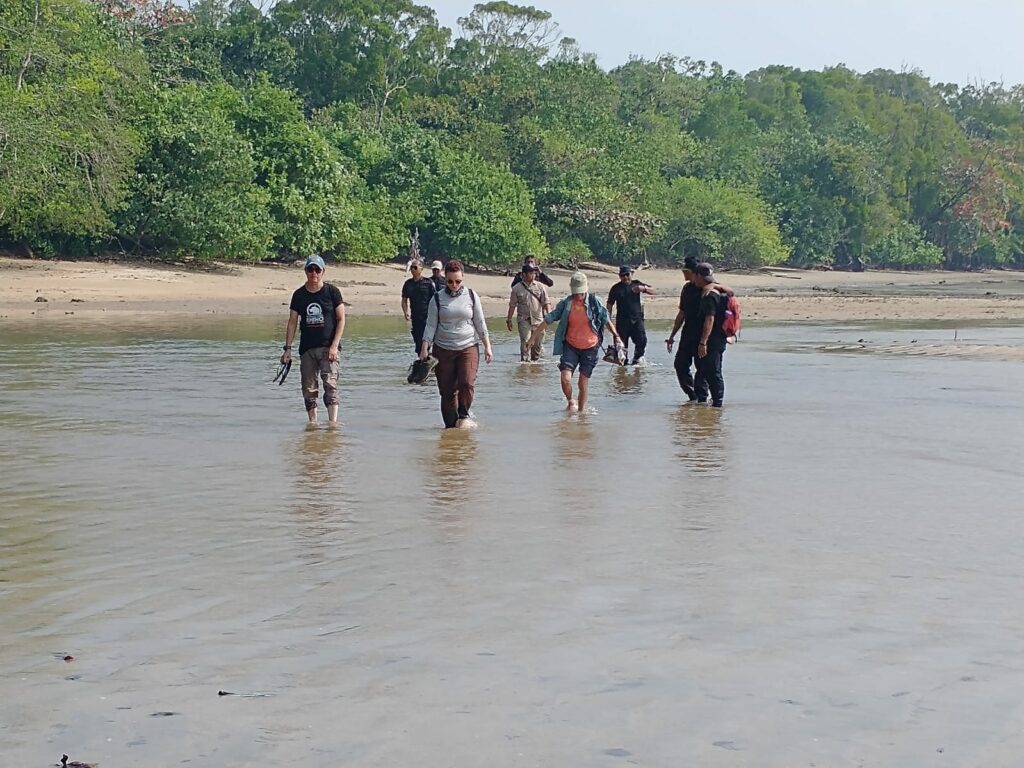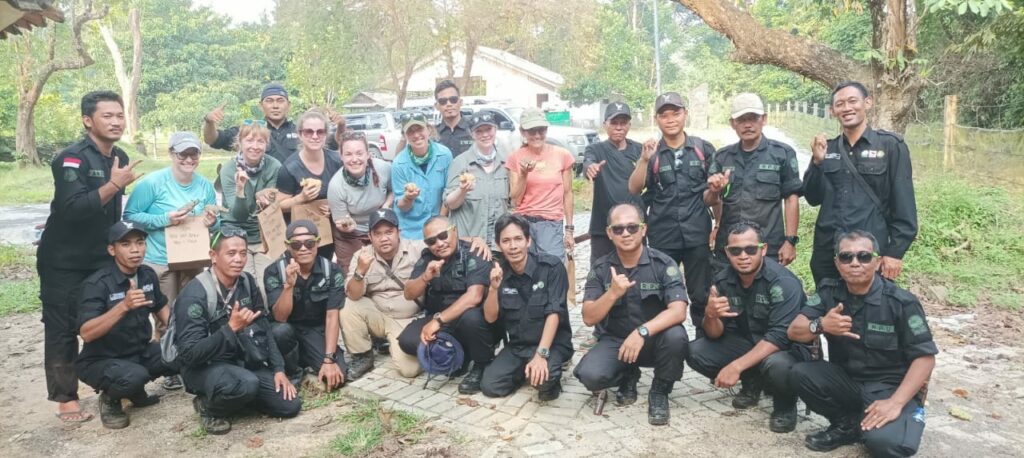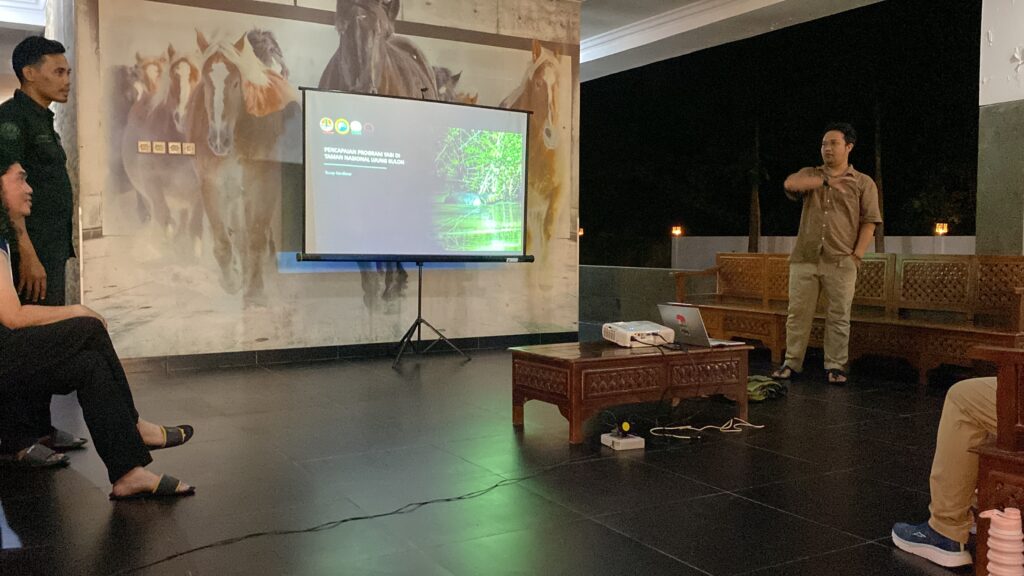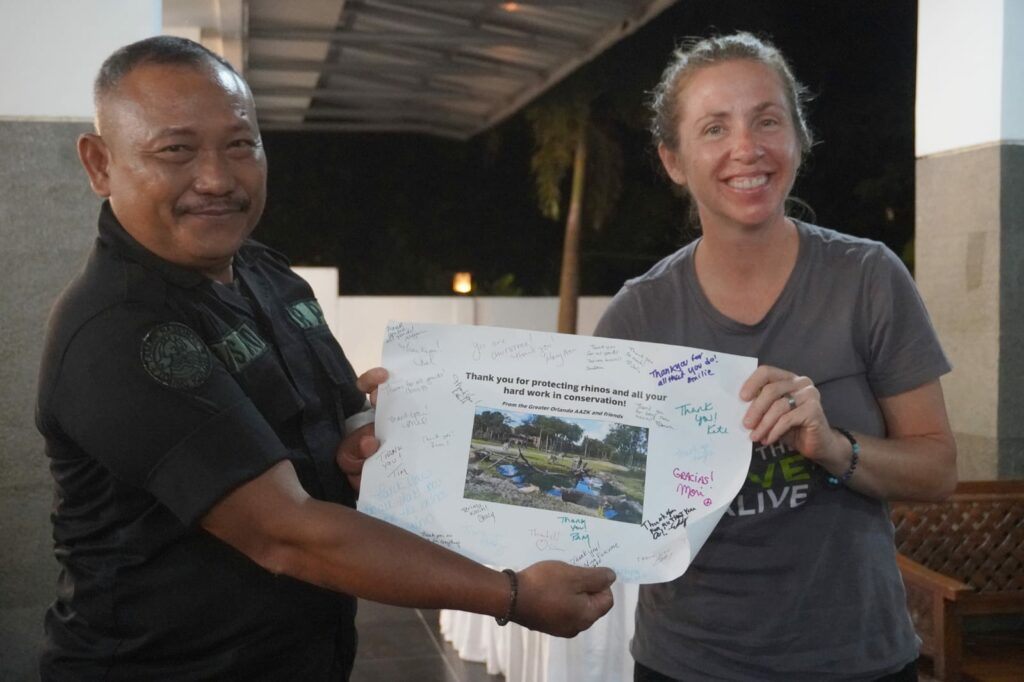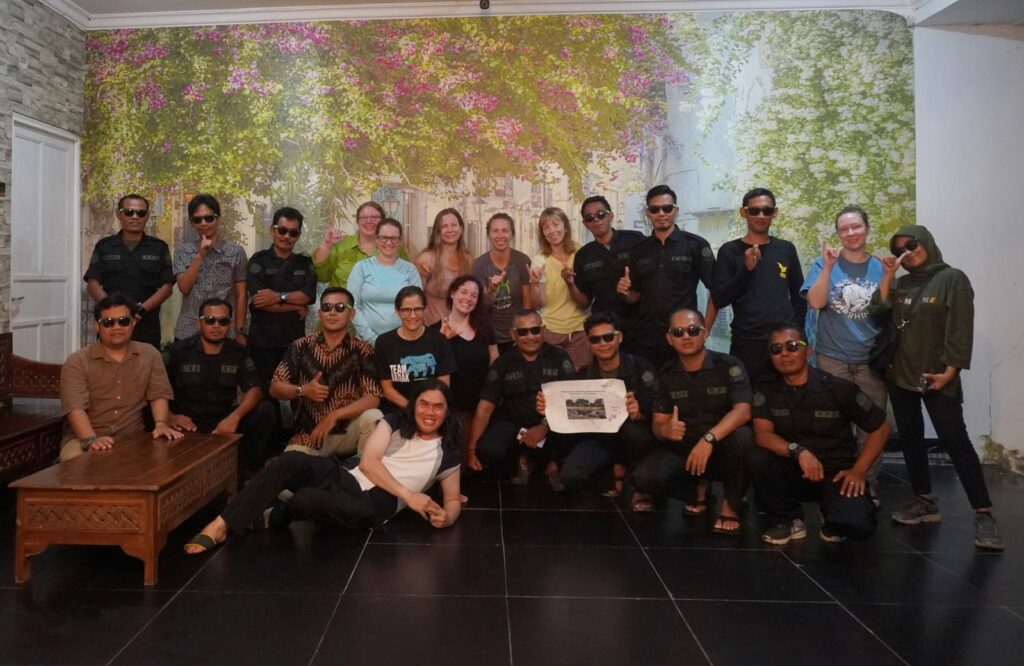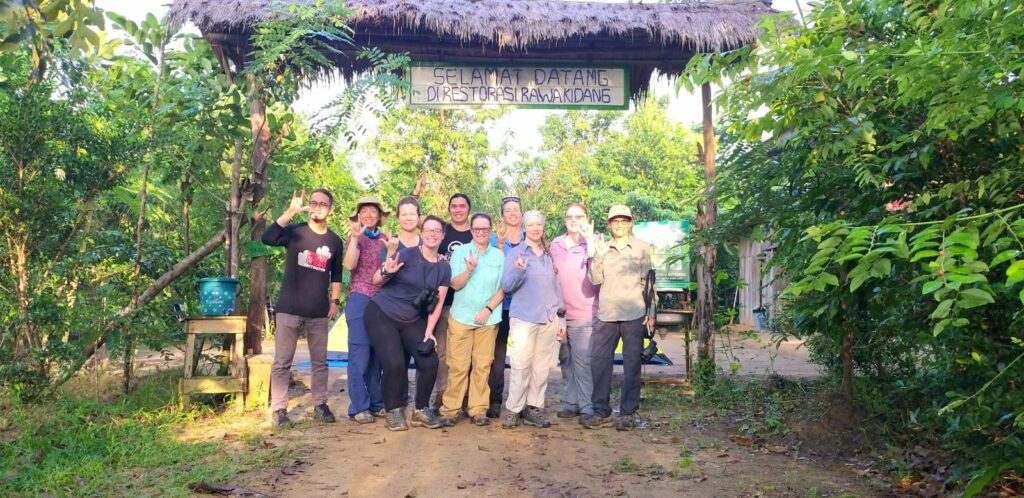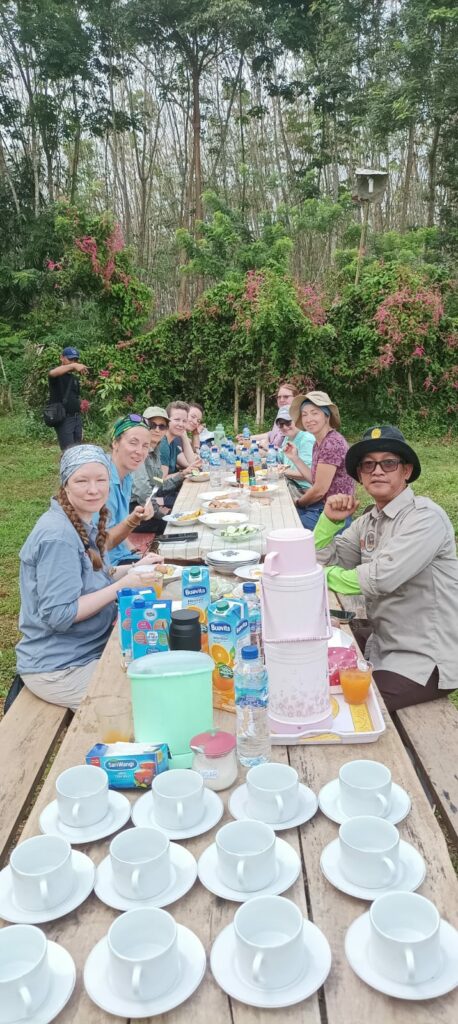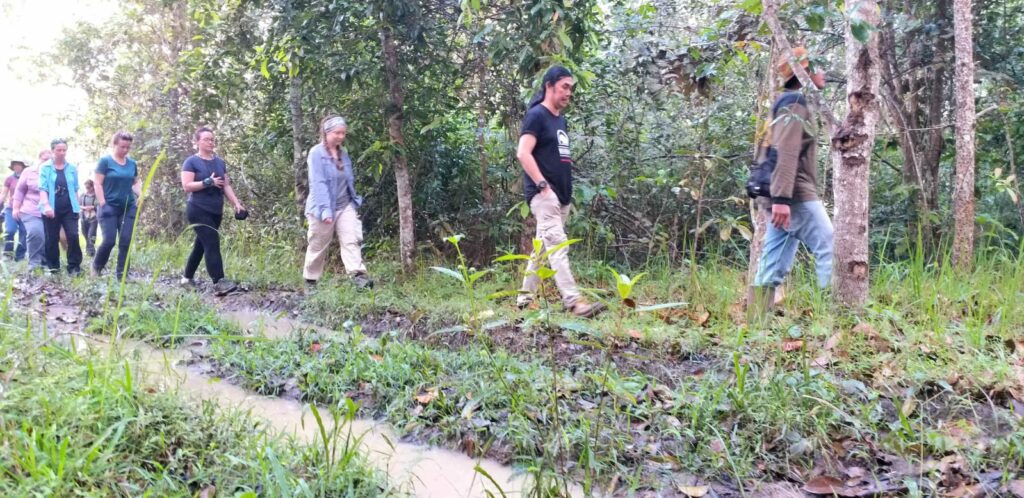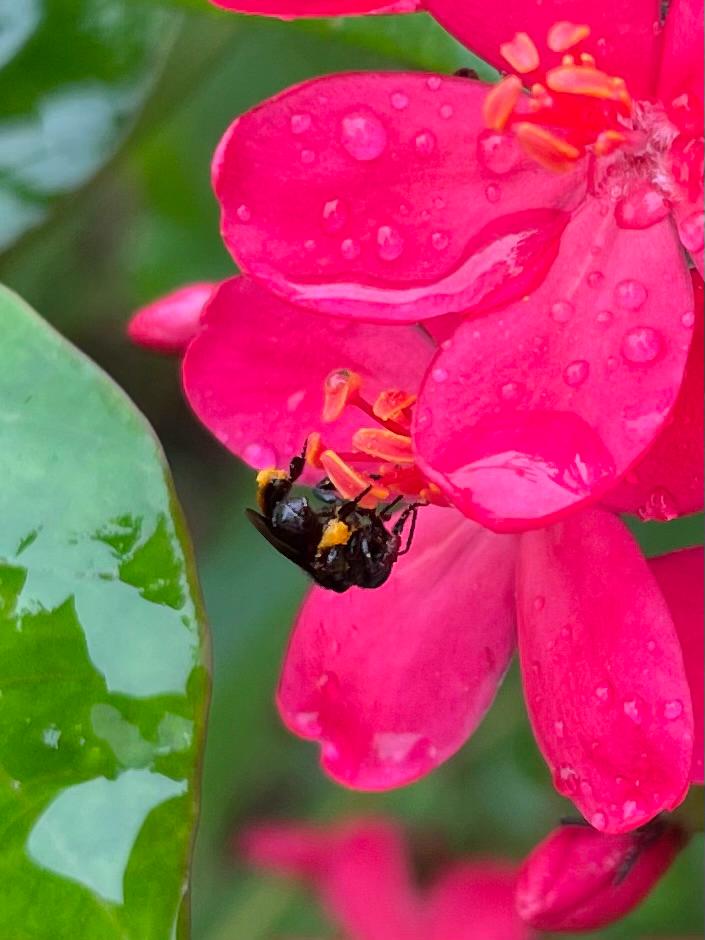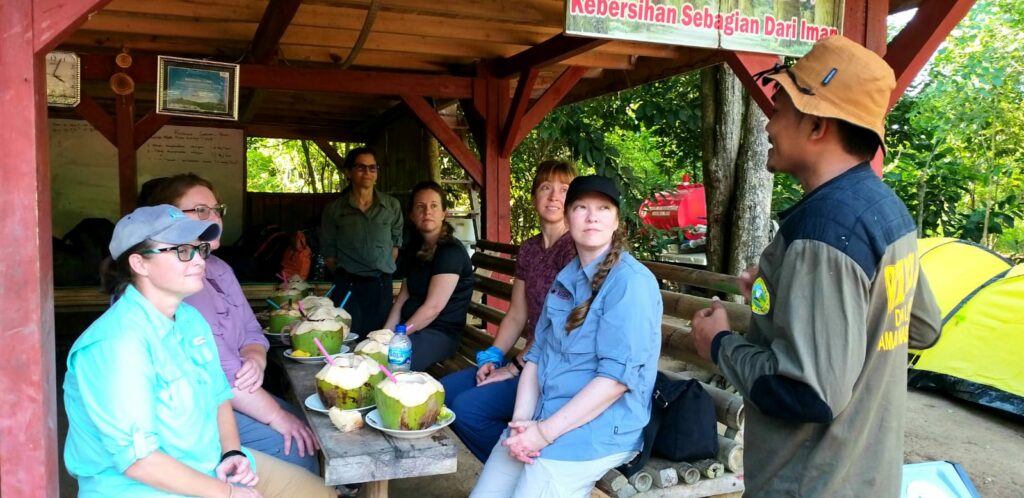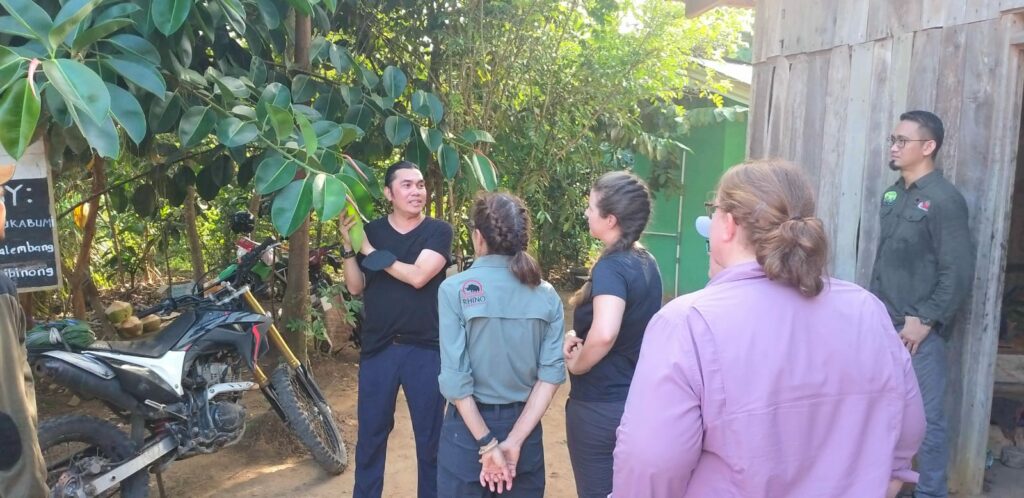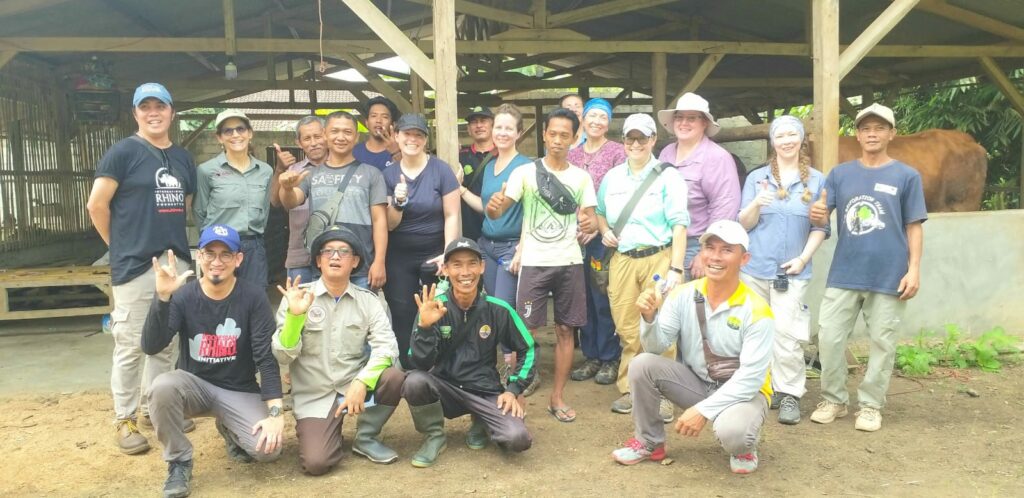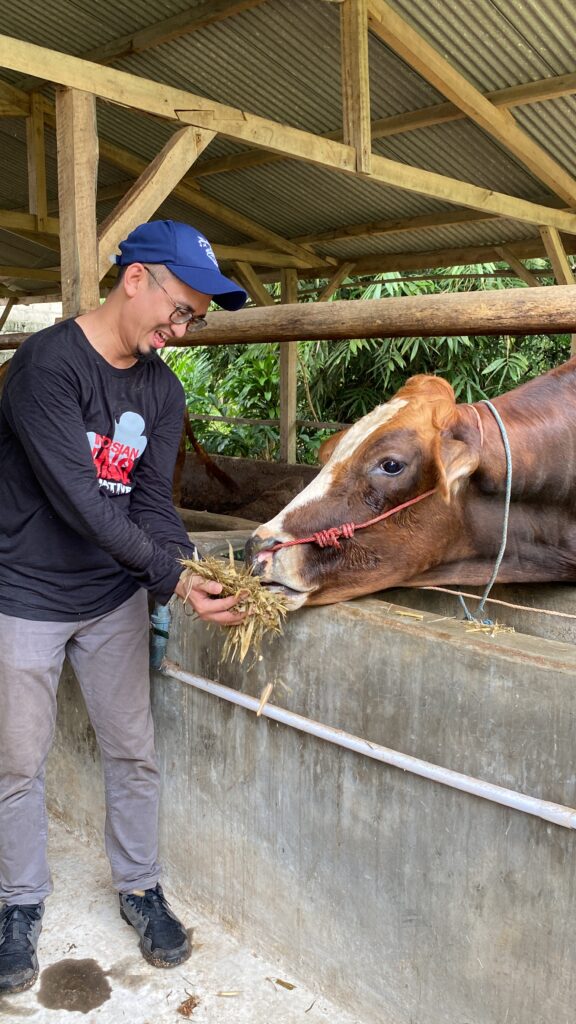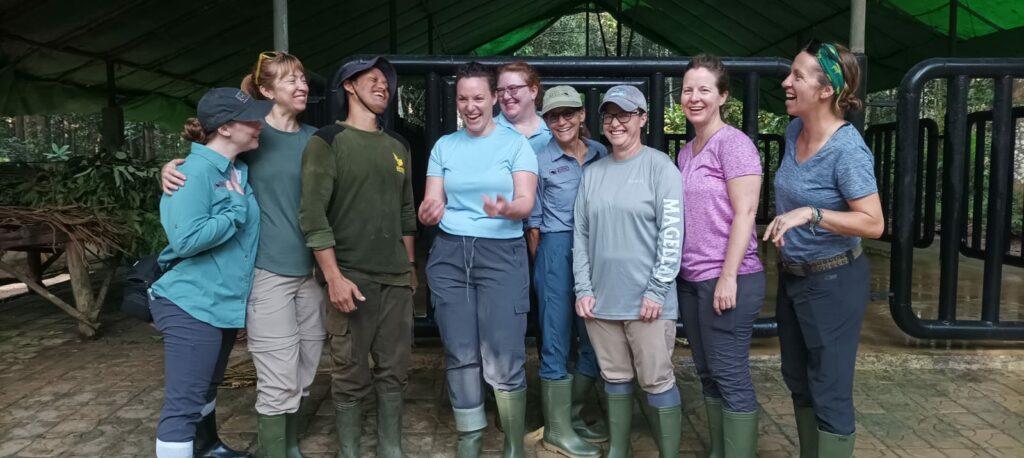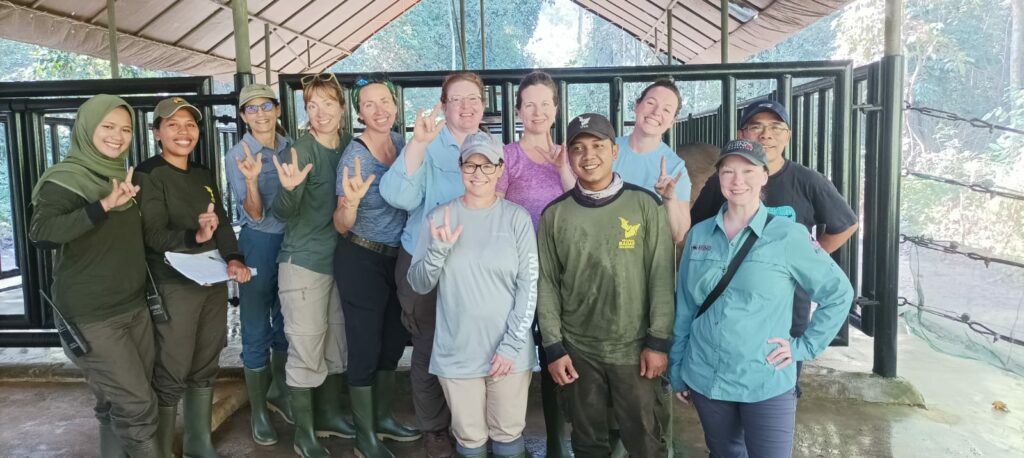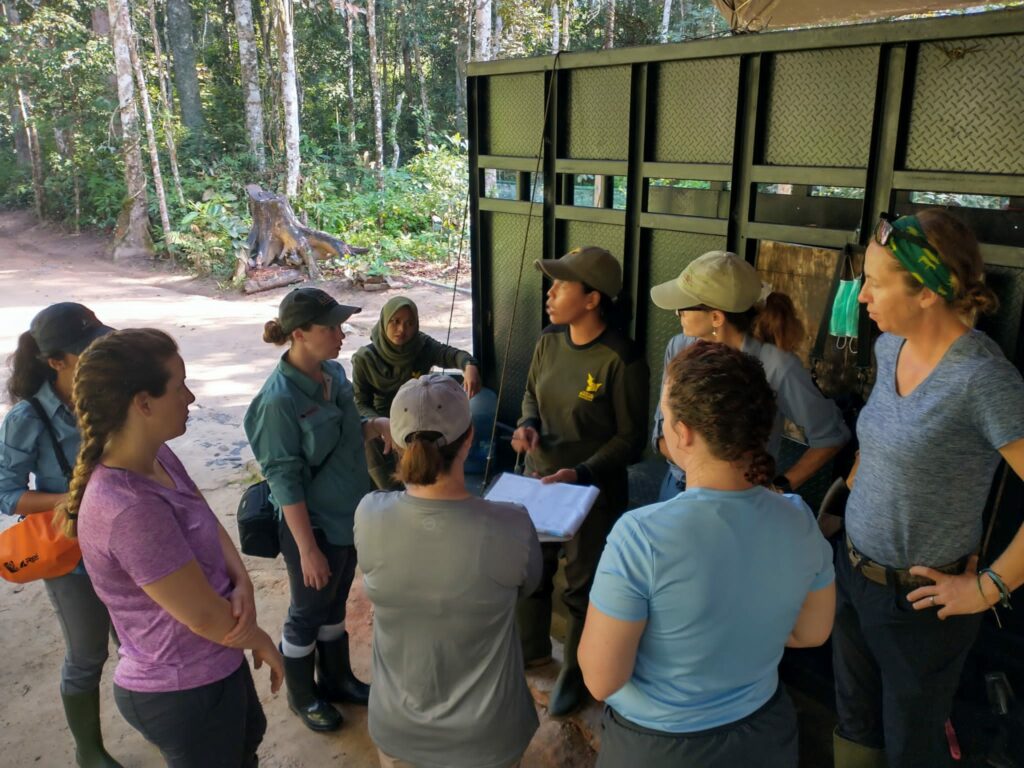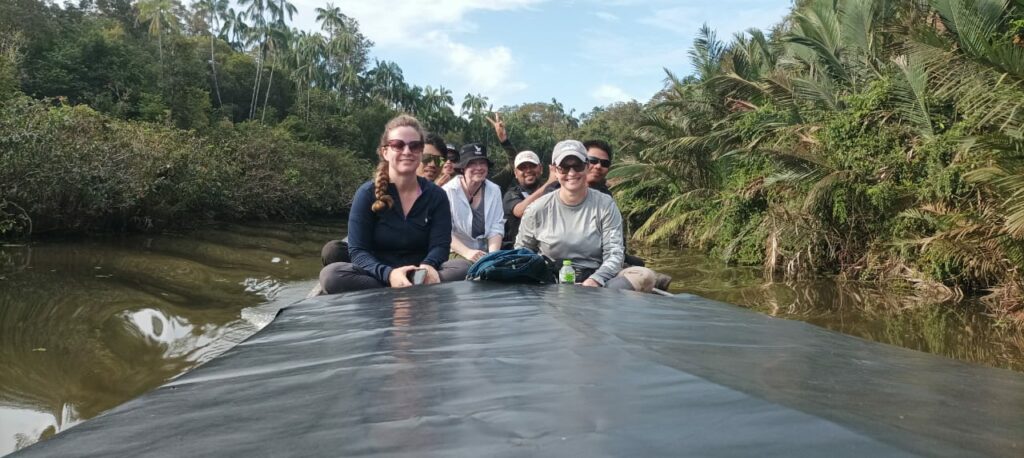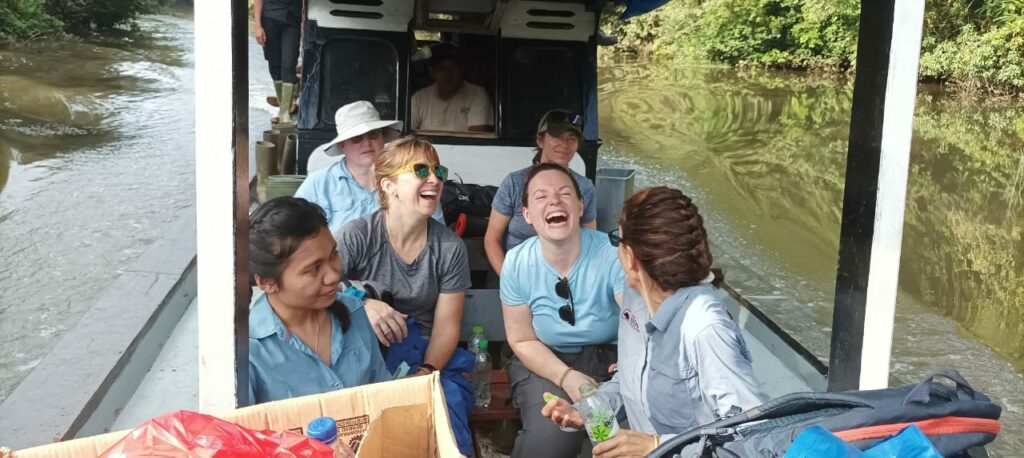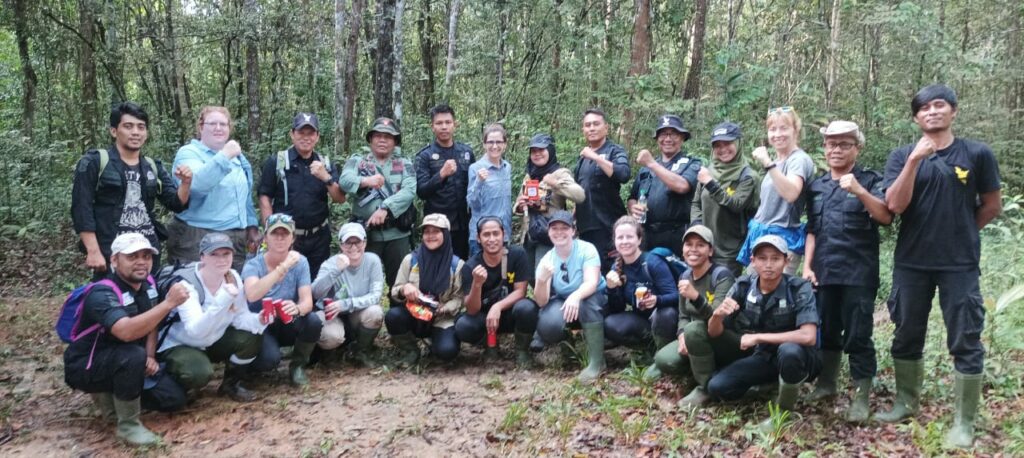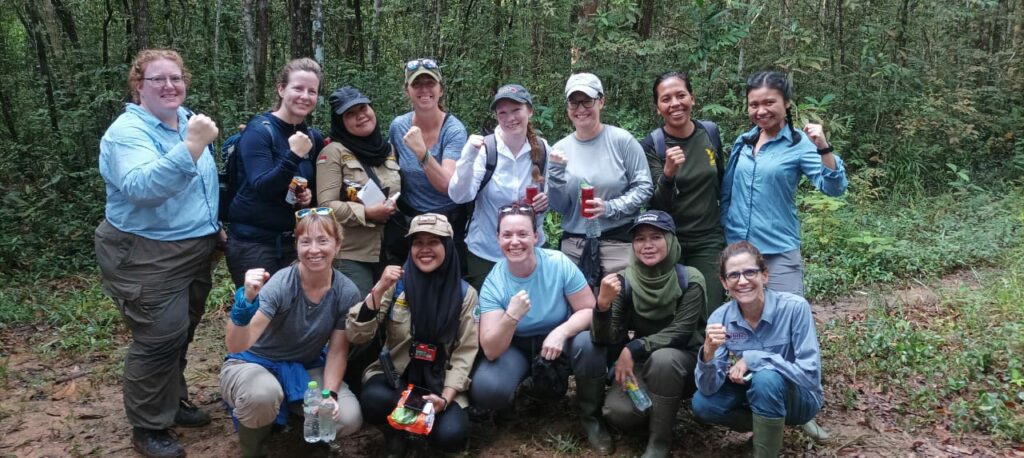Bowling for Rhinos is Back in Indonesia!
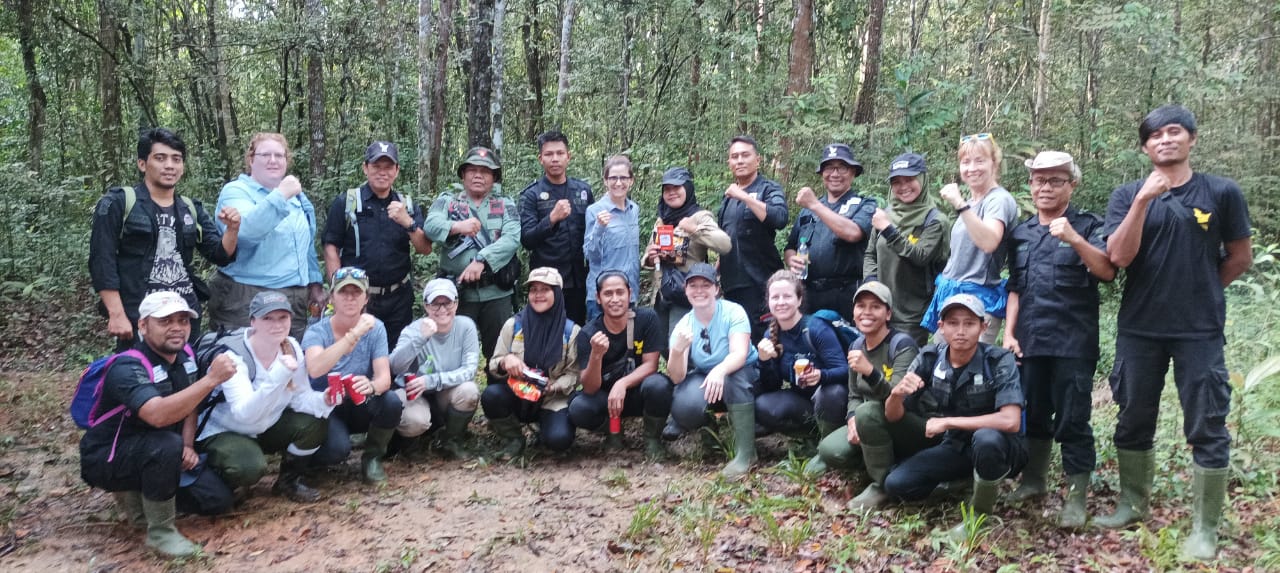
After a two-year hiatus for the pandemic, the International Rhino Foundation (IRF) and our partners were thrilled to once again host the annual ‘Bowling for Rhinos’ trip to Indonesia. Bowling for Rhinos, or BFR, is a fundraising and awareness initiative started by the American Association of Zookeepers (AAZK) over 30 years ago. AAZK chapters all across the US & Canada host an annual BFR event to raise money for rhino conservation and to-date have raised close to $9 million benefiting rhinos and their habitats throughout Asia and Africa. As a joint recipient of these BFR funds, IRF hosts an annual trip to Indonesia so that year’s trip winners (selected by AAZK) can get a first-hand look at the Javan and Sumatran rhino conservation programs they work so hard to raise money for.
This year we had representatives from the Jacksonville, Greater Orlando, and San Antonio chapters of AAZK join us in late July for a two-week trip hiking with Rhino Protection Units, exchanging keeper experiences, and meeting the incredible staff (and rhinos!) at the Sumatran Rhino Sanctuary. Once in Indonesia, the trip participants are affectionately known as ‘the Bowlers.’ Inov Sectionov, who is IRF’s Indonesia Program Manager, meticulously plans and coordinates every aspect of the BFR trip and has been leading these trips since their beginning, in 2005.
The trip began in Bogor, with a visit to the Batik Factory. Indonesia, and especially Bogor is well known for its batik, which is a fabric that’s been drawn on with wax before hand-painting with dyes, so that once the wax is melted off, it reveals a beautiful design. We got to try making a rhino design batik for ourselves and thankfully with help from the experts, came away with beautiful mementos and a huge appreciate for this craft.
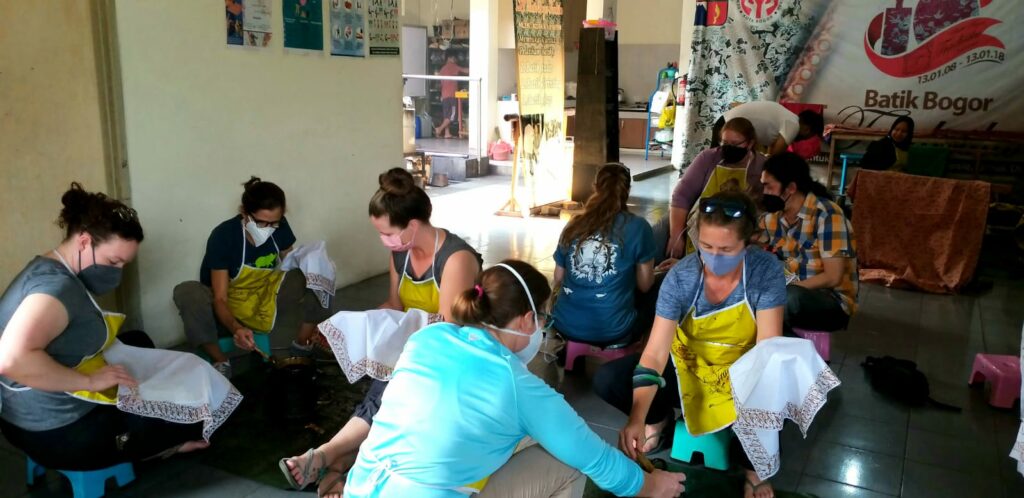
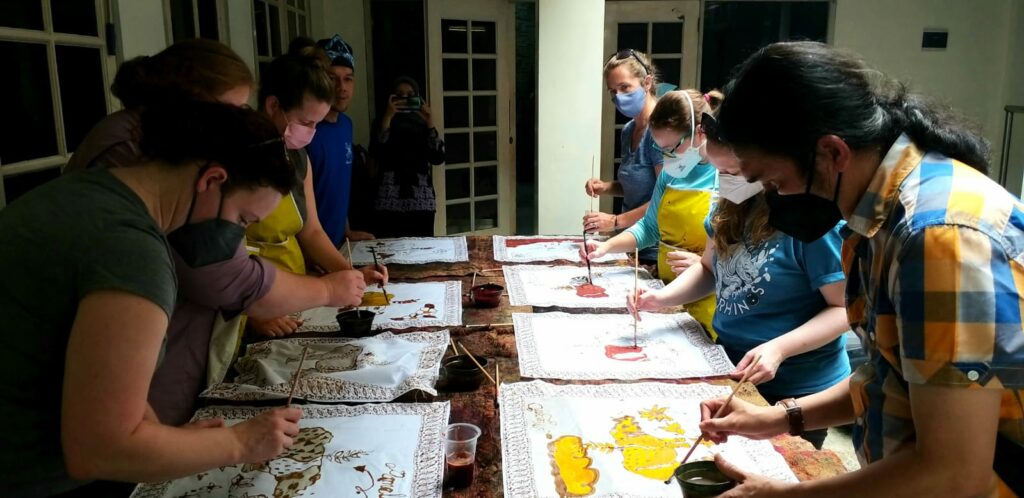
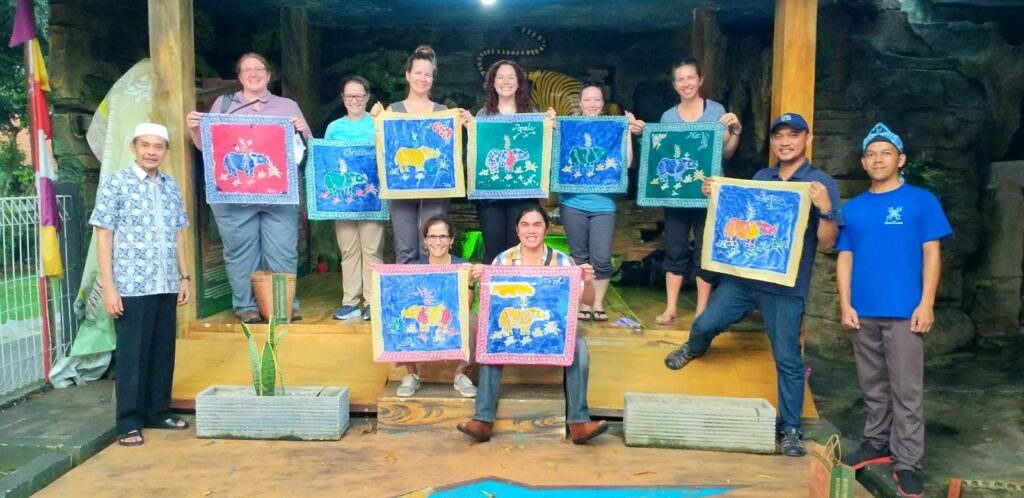
In a first for our BFR trips, we spent the next day at the incredible Taman Safari Indonesia. This WAZA facility is 400+ acres with a collection of over 3,000 animals. Taman Safari once housed Sumatran rhinos and was integral in the design and planning of the Sumatran Rhino Sanctuary in Way Kambas National Park. Senior keepers, managers and vets spent the entire day with us, which began with a session sharing animal-care knowledge between the Bowlers and Taman Safari staff, and continued with a tour of their award-winning facility. We will definitely be back!
We departed Bogor to spend the next several days in Ujung Kulon National Park, the only place in world where Javan rhinos still exist. We stopped first at the National Park headquarters and met with the Director and his staff who taught us more about their work protecting and monitoring Javan rhinos, and how IRF and AAZK’s support has a direct impact on this species.
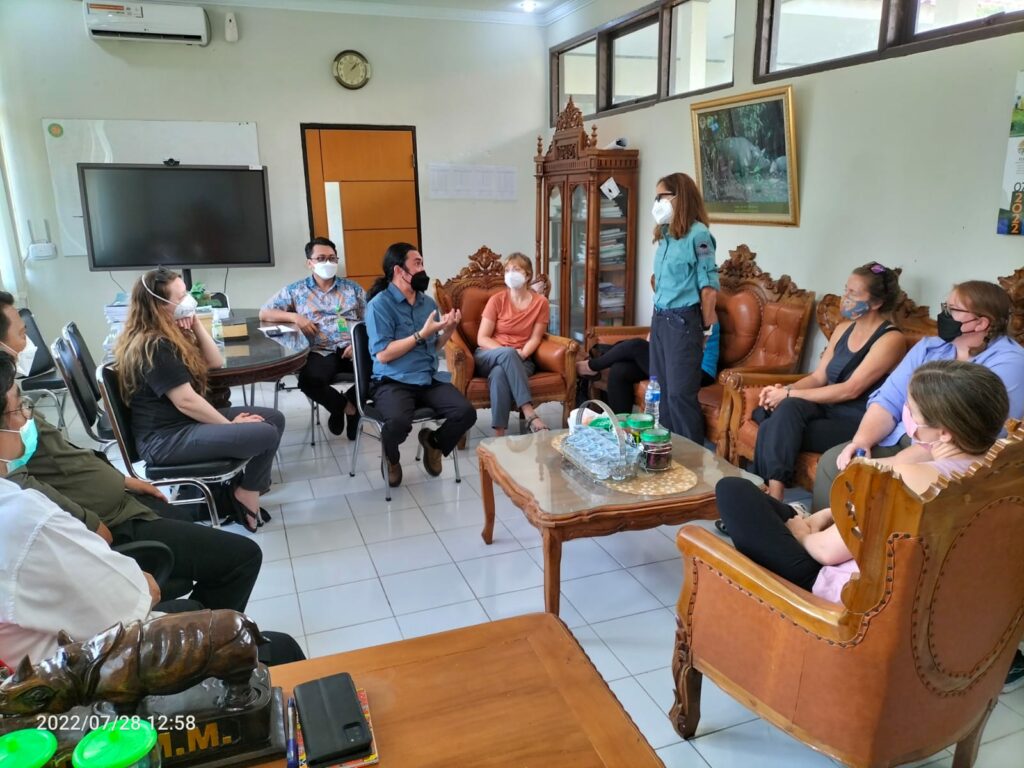
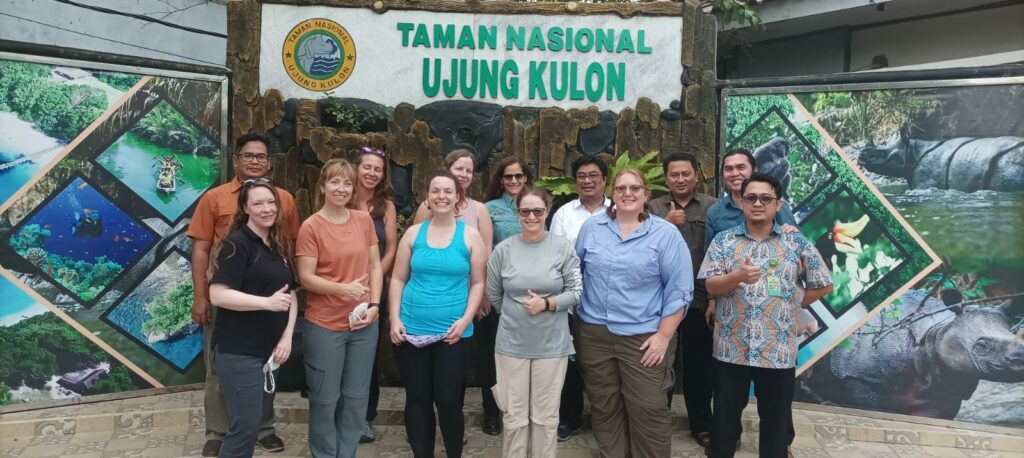
The next few days were spent with the Rhino Protection Units,or RPUs, who are highly trained, four-person anti-poaching teams that intensively patrol key areas within the park. RPUs are managed by one of IRF’s in-country partners, Yayasan Badak Indonesia (YABI), and since Ujung Kulon is a peninsula, RPUs in this park patrol both by land and by sea. Each day we were picked up by the marine patrol boat and taken to the starting point for our hikes in the heart of the Park. We didn’t see any rhinos directly (they’re very shy!) but we did find many secondary signs like footprints and feces – the RPUs even showed us how to tell if a torn leaf was chewed on by either a banteng (a cattle species) or a Javan rhino. We ended our day with peaceful canoe ride down the Cigenter River back to the beach and our boat.
The next day we trekked within the Javan Rhino Study and Conservation Area (JRSCA), a 5,000 hectare zone within Ujung Kulon. It had rained the night before so it was a challenge to keep our boots dry during this trek, but spending time with the RPUs and JRSCA team learning about their jobs and their lives easily made up for any soggy shoes. The RPUs and Bowlers exchanged gifts, with the Bowlers presenting RPUs with cards signed by staff at each of their zoos, thanking them for their work protecting Javan rhinos.
From there, we drove to Jakarta to catch a short (26 minute) flight to Sumatra, one of the 17,000 islands that make up Indonesia. Here, we would spend most of the remainder of our trip in Way Kambas National Park (WKNP), home to the Critically Endangered Sumatran rhino. We visited the National Park director’s office where he welcomed us to Way Kambas and explained that this being Indonesia’s only National Park without a buffer zone between the Park and surrounding villages, it is essential to engage these local communities as stewards of the conservation of Way Kambas’s habitat and wildlife.
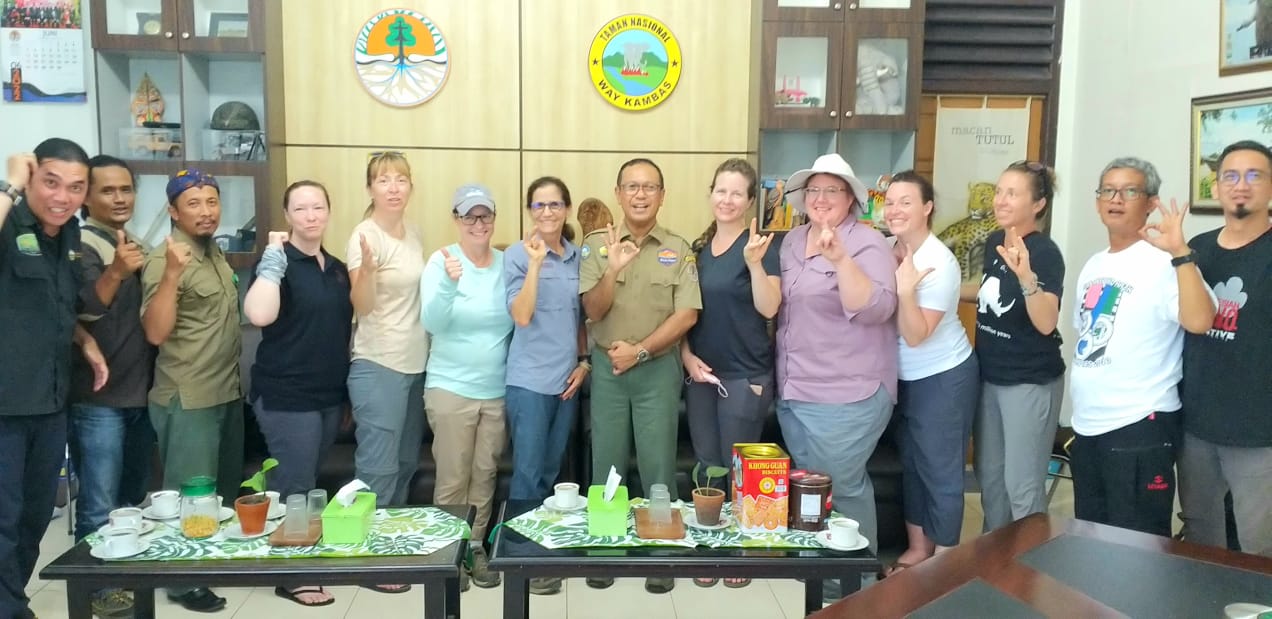
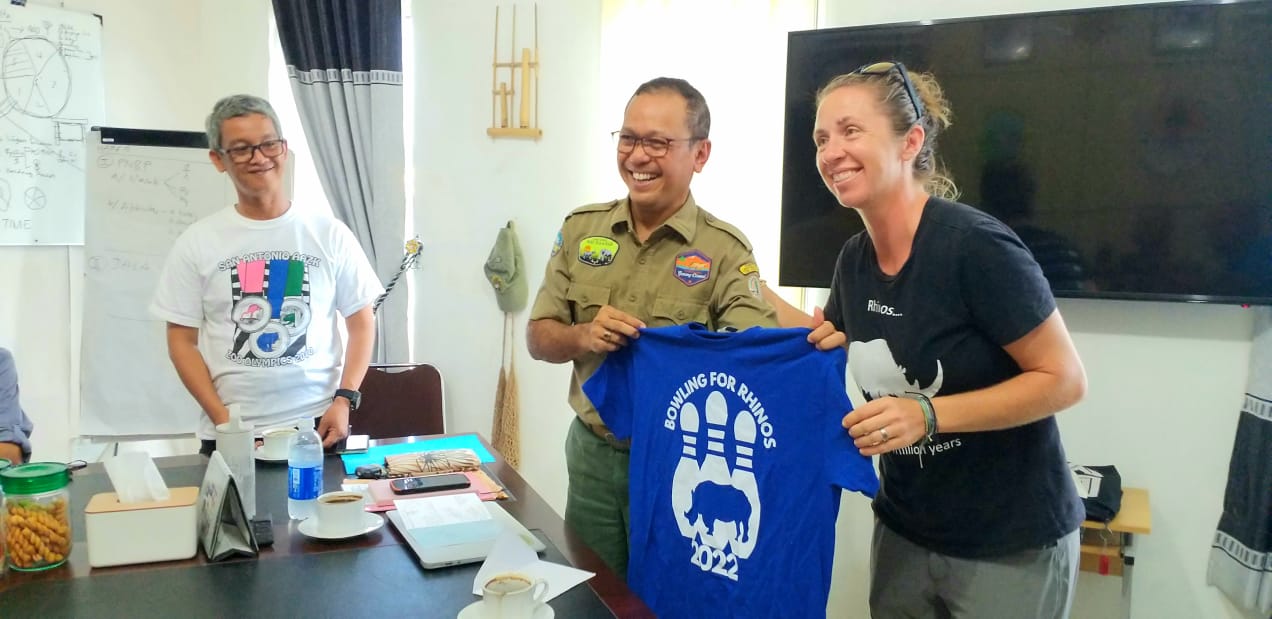
After that we visited Rawa Kidang, one of three sites within WKNP where local communities and park authorities are working together to restore and reforest land that was once degraded. In the last few years, more than 60,000 seedlings have been grown and planted at these restoration sites! When we arrived, we met with park staff and our local partners, Indonesian Rhino Initiative (IRI), for a tour of the site and presentation on the project. In another first for our BFR trips, we camped at the restoration site, sleeping under the stars in our very own tents.
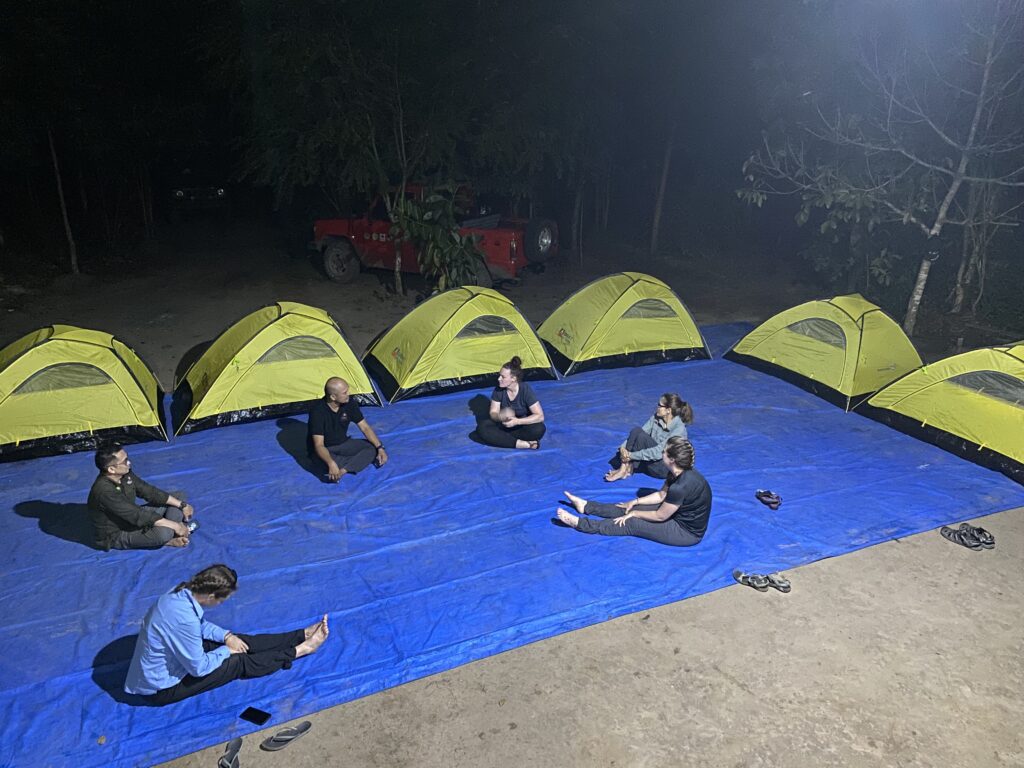
We were up early the next morning for bird watching – since the trees have returned to this part of the Park, dozens of bird species have returned as well. We took a short walk to a neighboring village and saw several of the community livelihood programs managed by IRI. We saw a family’s rubber tree plantation, sampled honey from beekeepers and witnessed how waste from harvesting cassava root is being turned into feed for cattle so that farmers don’t have to enter the Park to collect grasses for them. All of these projects benefit the communities, the land, and the wildlife of Way Kambas and all of the trip participants left inspired by the success of this conservation model.
Before leaving Rawa Kidang, the Bowlers got to plant the first trees in the new “Bowler’s Alley.” This tradition of ceremonial tree-planting for the Bowlers began at Bukit Barisan Selatan National Park (BBS) in 2008 as way to remain a permanent part of the places they’re helping protect and to help offset carbon emissions. Now that the BBS plot is full, future Bowlers will have a second “Alley” to fill with their trees which will help restore forest growth and provide food and shelter for local wildlife.



For our grand-finale we spent three nights at the Sumatran Rhino Sanctuary (SRS), a 250-acre conservation breeding facility located within Way Kambas National Park. This was a once-in-a-lifetime experience as we spent our days and evenings with the dedicated staff of the SRS who also reside there during their work weeks. The eight rhino residents spend most of their day and night in their 25-acre semi-wild enclosures, so we spent our mornings at the rhino paddocks, while they were in for their daily baths and husbandry training.
While at the SRS, we also met the RPUs the patrol the surrounding forests and spent time with them exploring the Way Kanan river. As we floated down the river on our way to their forest camp, we saw crocodiles, sea eagles, kingfishers, deer, and macaques.
From their forest camp, we took a short hike with the RPUs so they could demonstrate some of their duties while on patrol. They had the Bowlers search for the snares they hid to show how poachers might try to camouflage a snare from wildlife and RPUs. The RPUs are masters at spotting snares! Most of the snares set here are meant to trap smaller game for meat to eat or sell, but snares are indiscriminate and can injure any animal that gets caught it in, so spotting and dismantling snares is one of the many critical functions that the RPUs perform.
On our final night at the SRS, we gathered with staff for a presentation on the history of the Sumatran rhino conservation breeding program and the keepers and Bowlers exchanged stories about how they got started in their careers. To share so much in common with someone on the other side of world was a priceless realization for all the keepers and made them feel that much more connected in their passions.
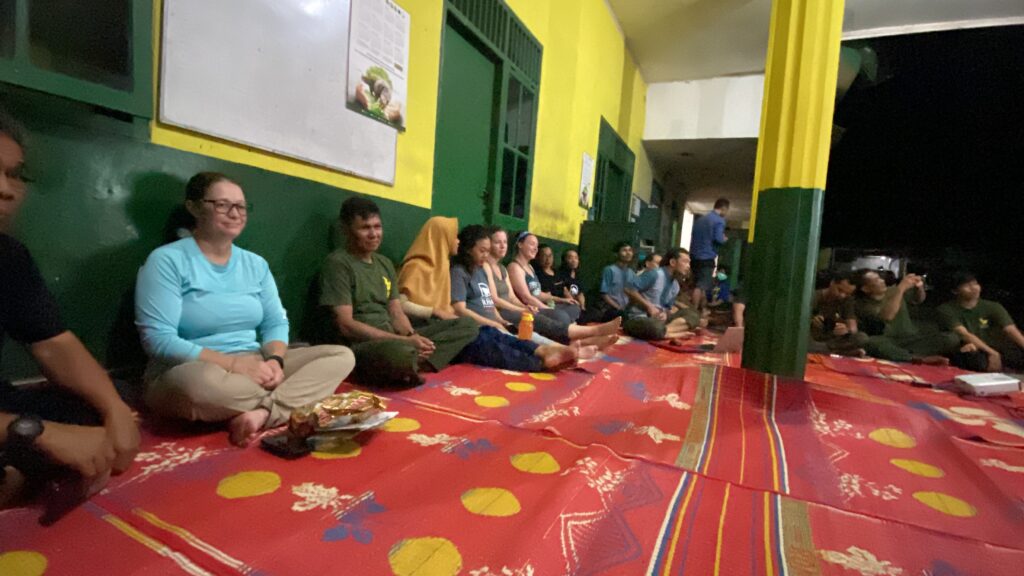
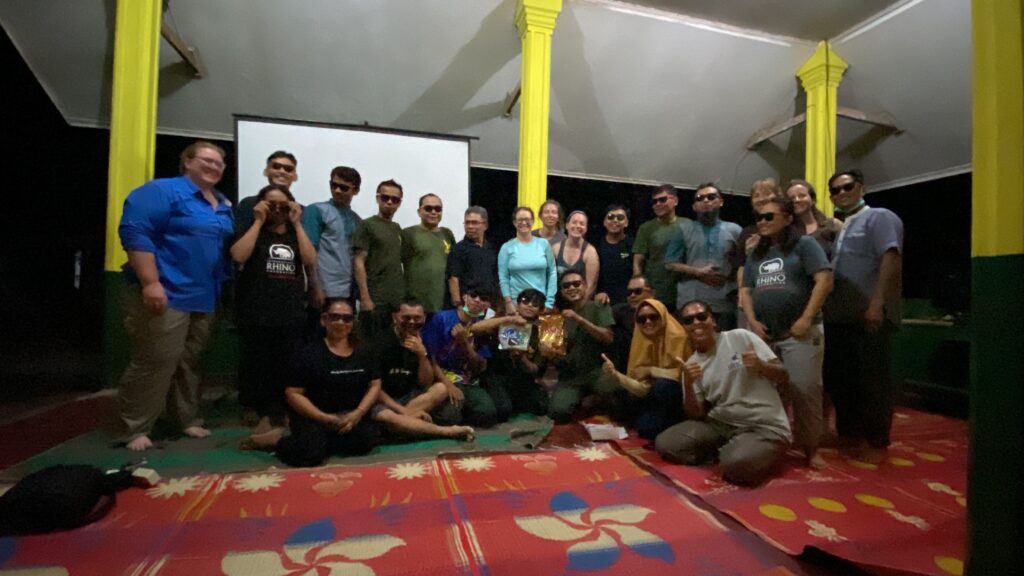
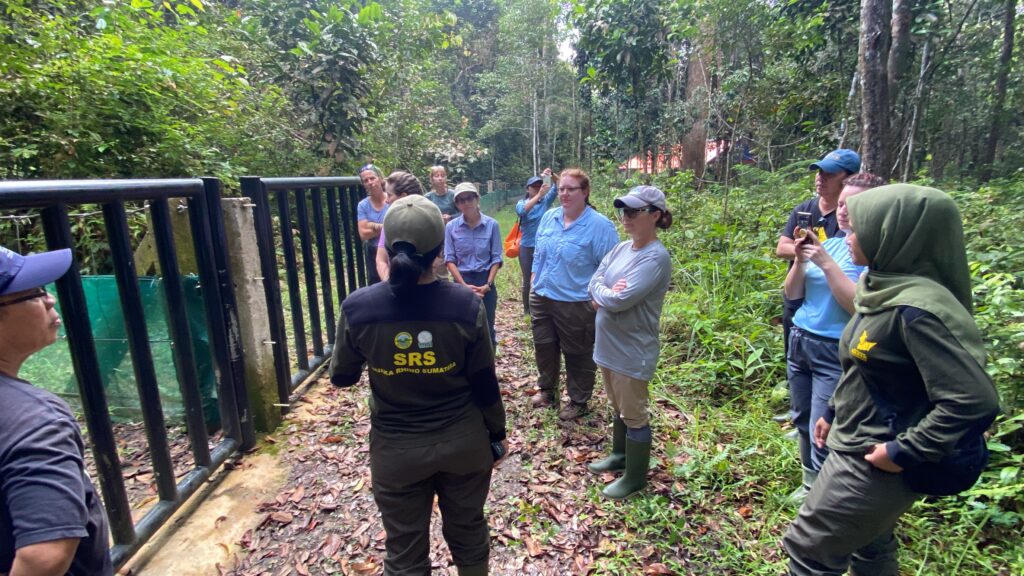
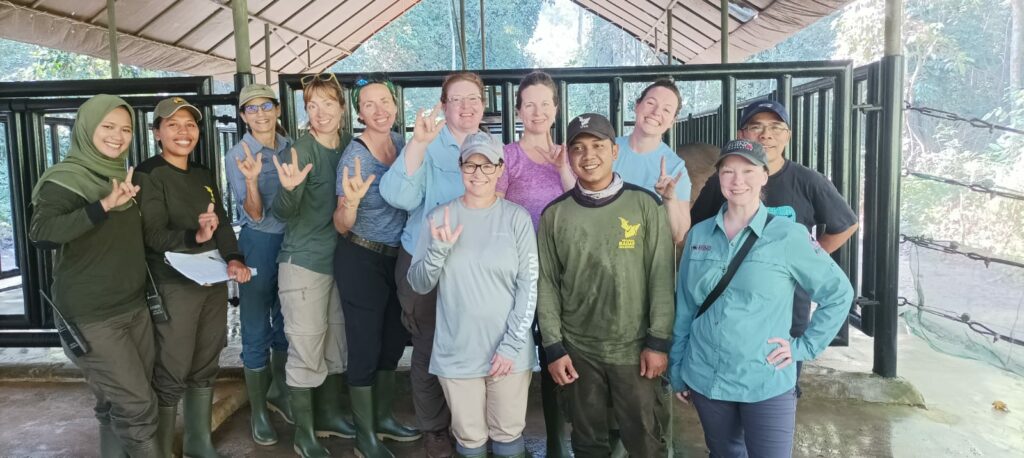
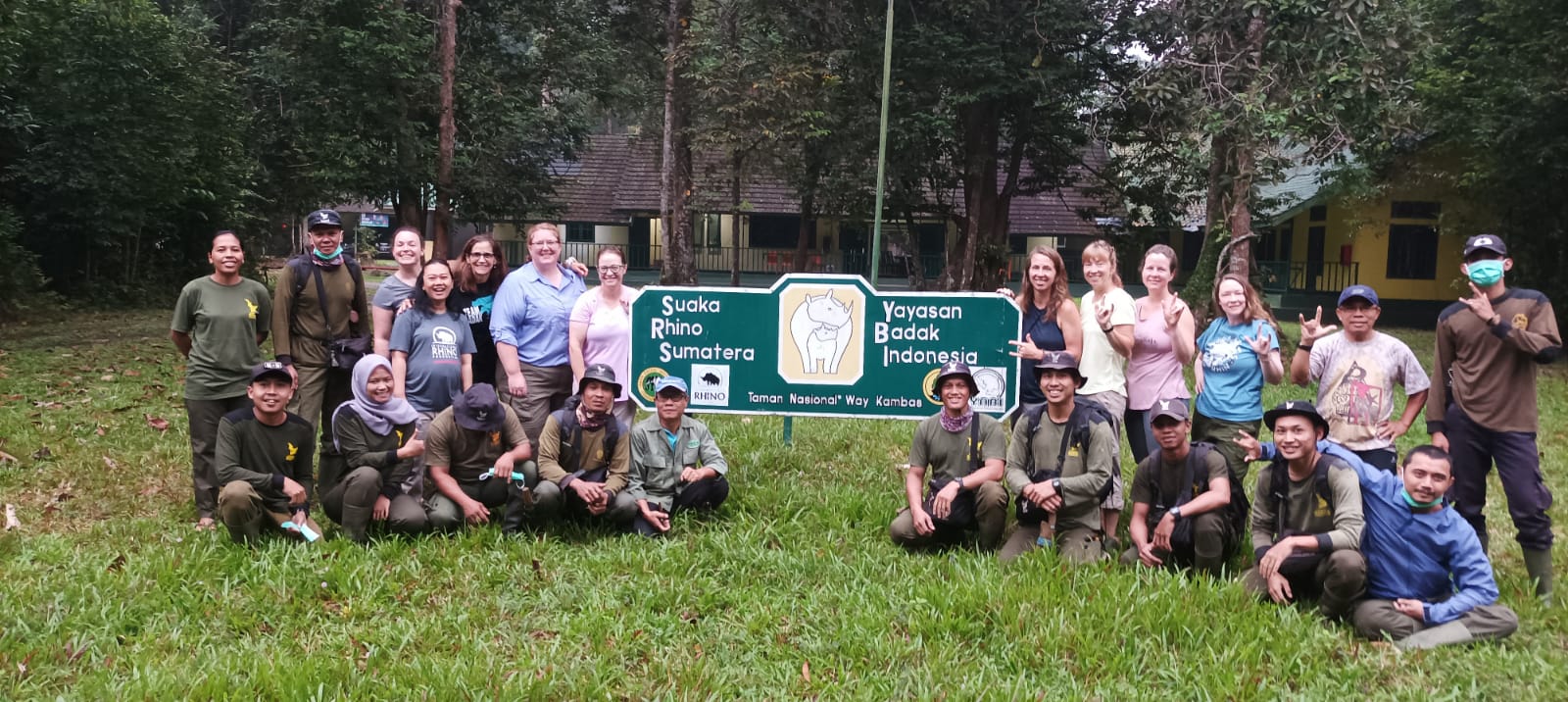
As we said our goodbyes, we returned home with a deepened appreciation for the work we saw by dedicated conservationist and a renewed sense of hope for the future of Javan and Sumatran rhinos.
The International Rhino Foundation is appreciative of the BFR efforts across the globe and we are so glad to be able to bring BFR to field sites in Indonesia again.
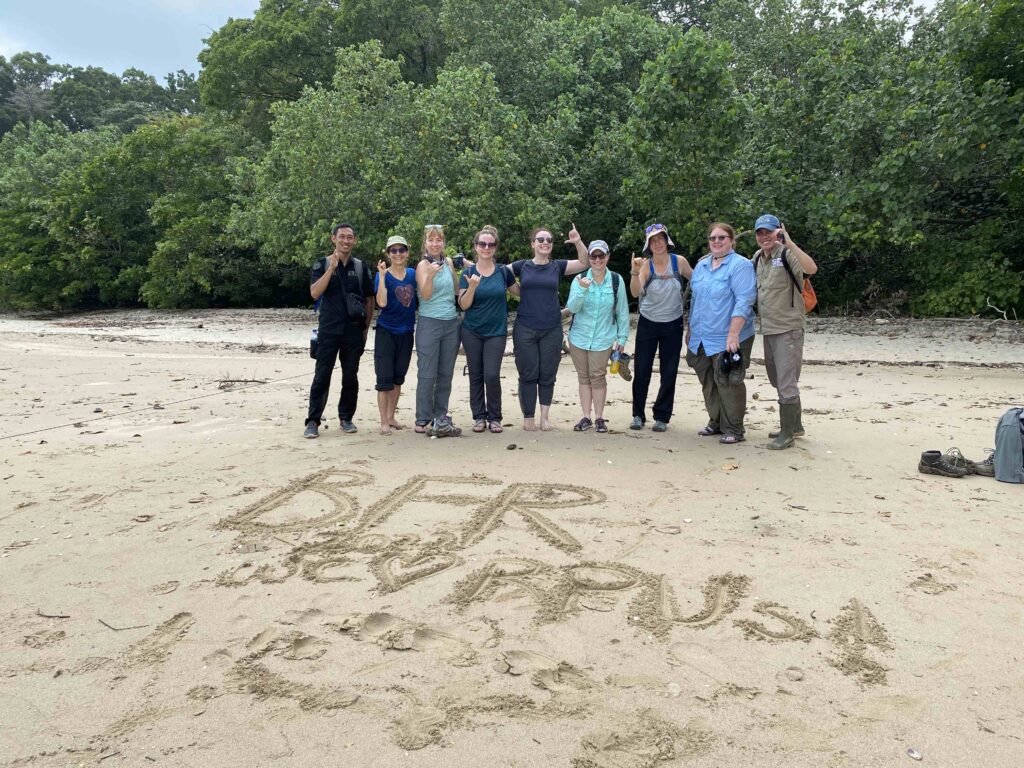
BFR events are hosted across the US and Canada each year, reach out to your local zoo or AAZK chapter for more information on their event and how you can participate.
All photos were taken and published with permission from Indonesia’s Ministry of Environment and Forestry, Ujung Kulon National Park, and Way Kambas National Park.

